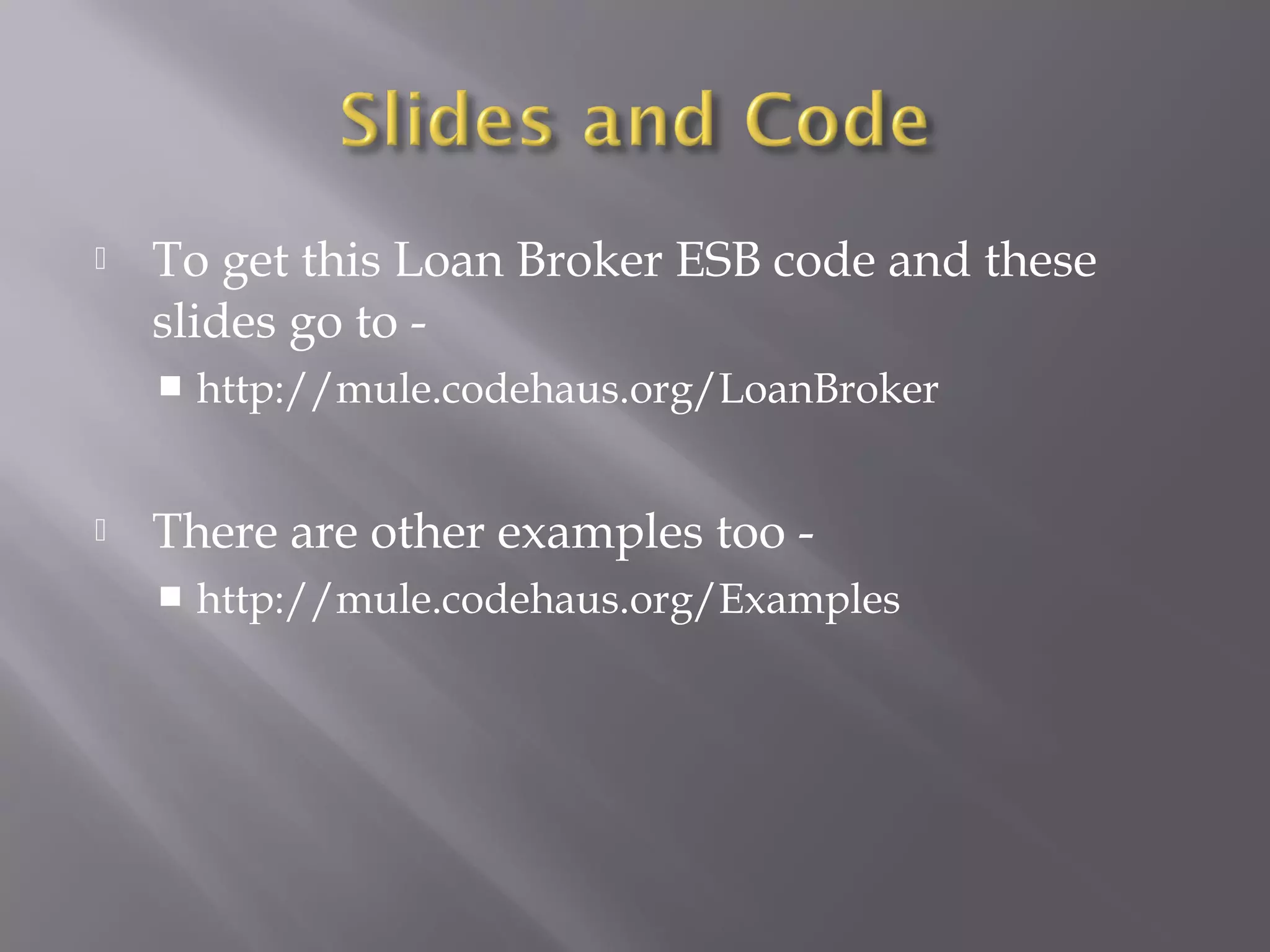1. A client application makes a loan quote request to a LoanBroker service, which creates a LoanQuoteRequest message.
2. The message is sent to various services via JMS to retrieve a credit profile, get lender recommendations, and request quotes from banks.
3. The responses from the banks are returned to the LoanBroker, which selects the lowest quote and returns it to the client.
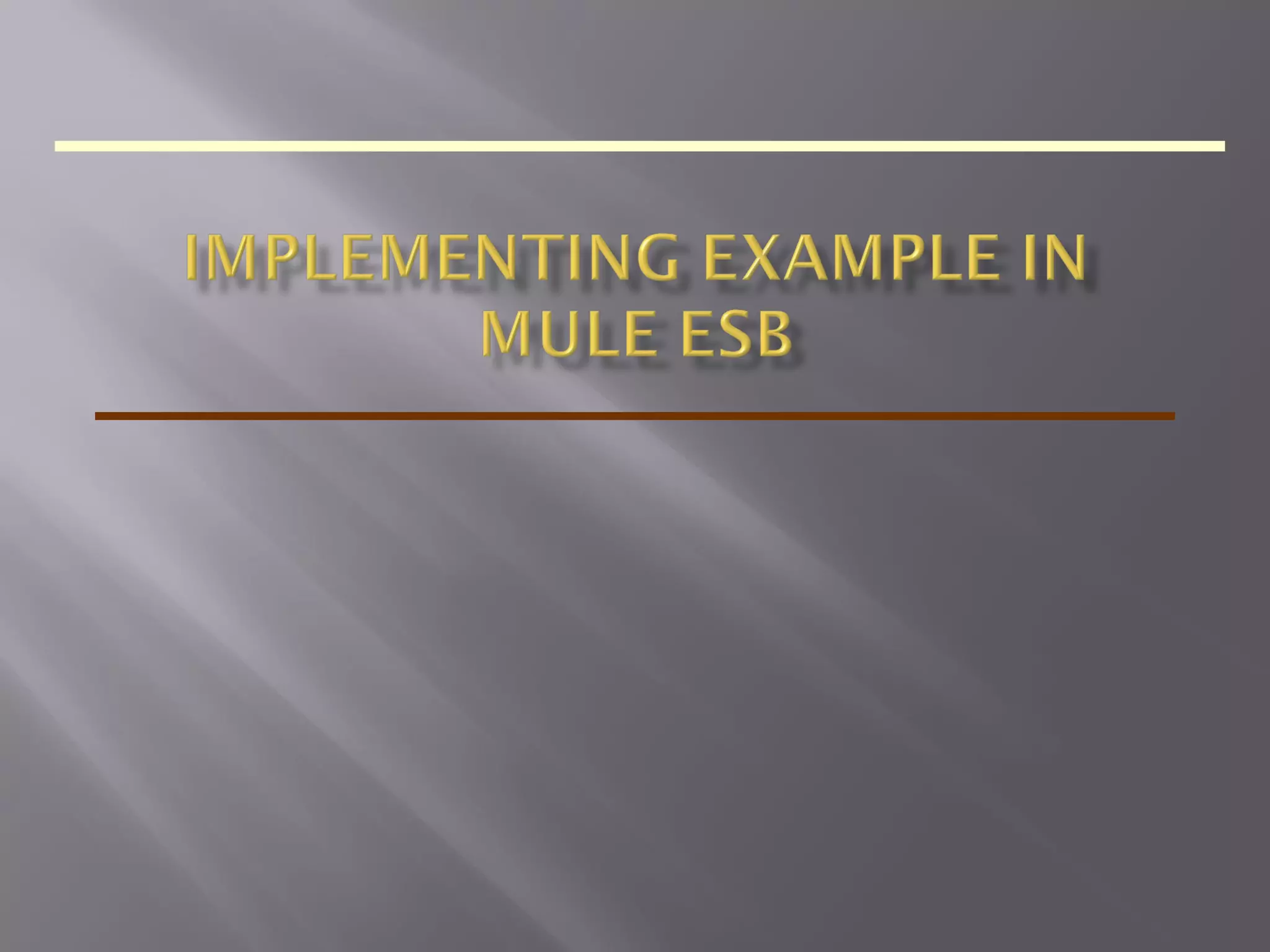
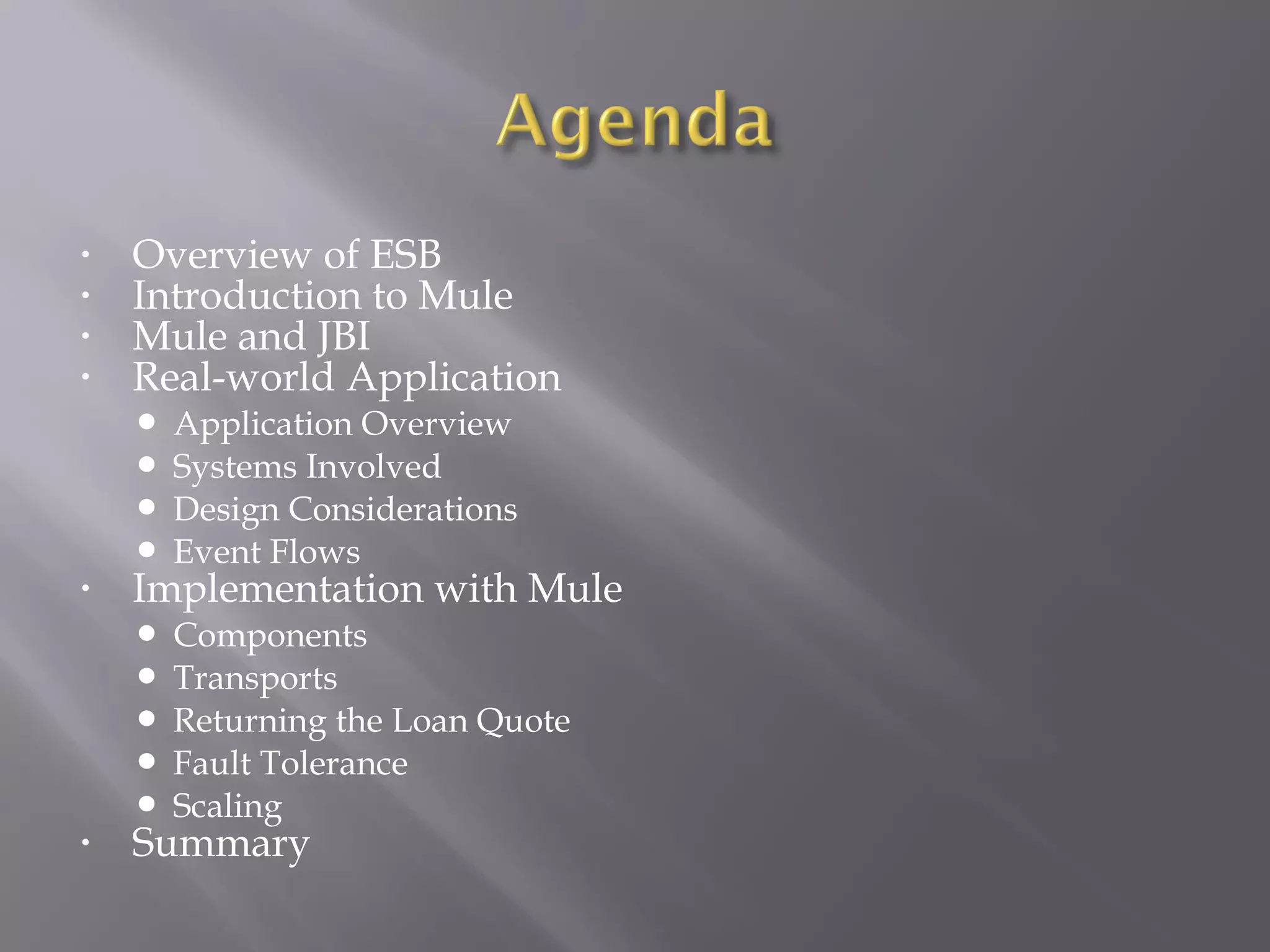
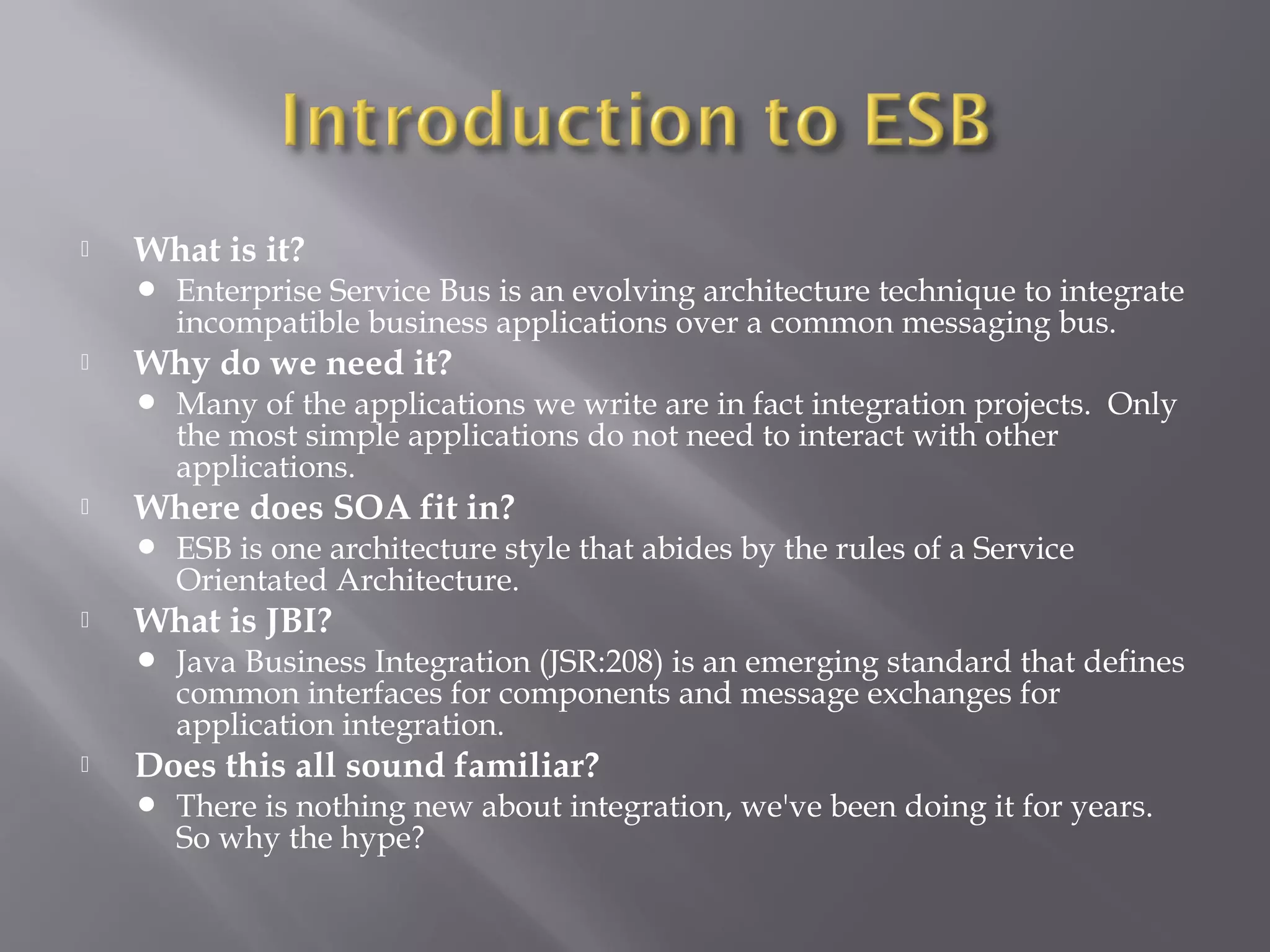
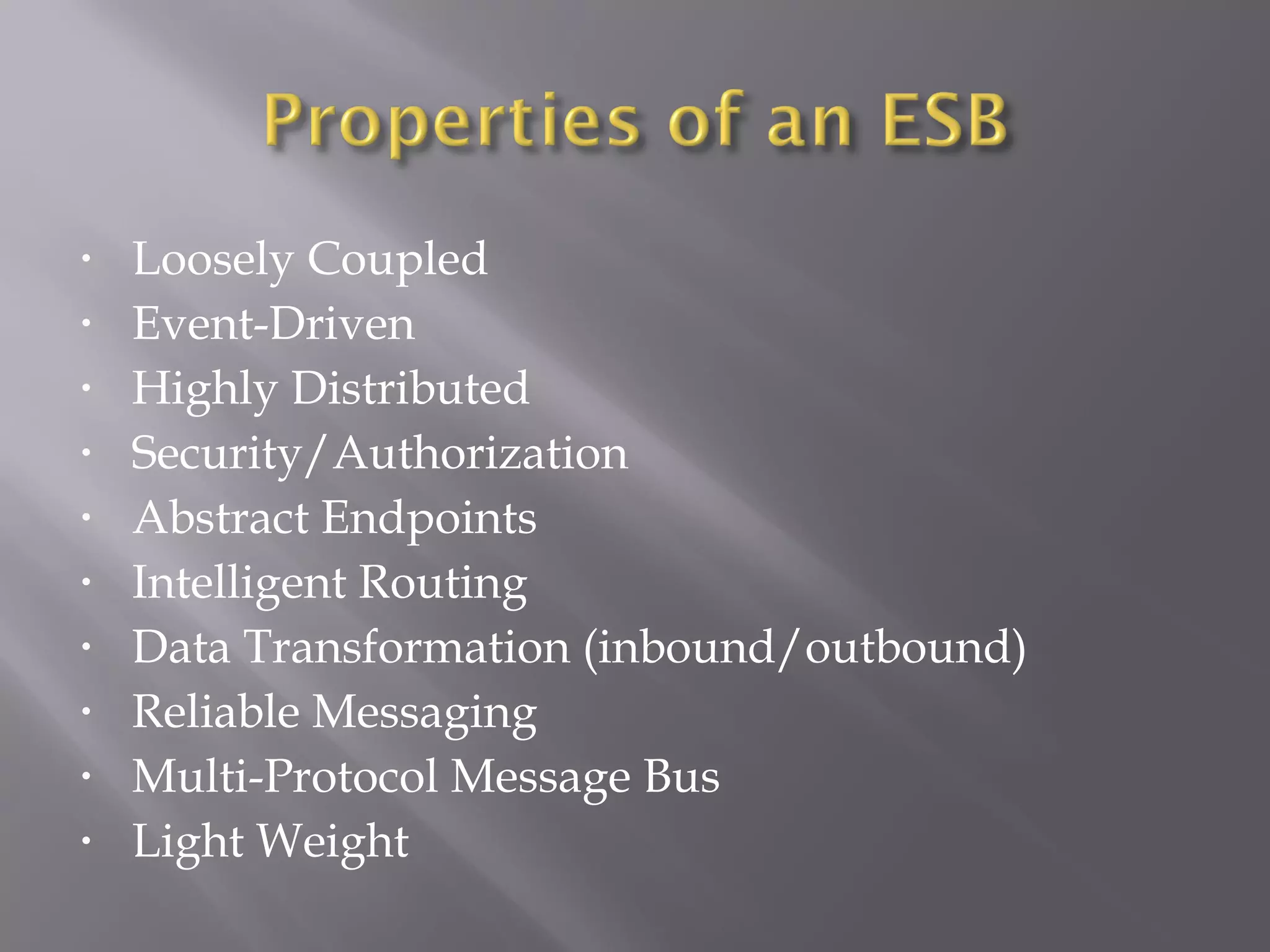
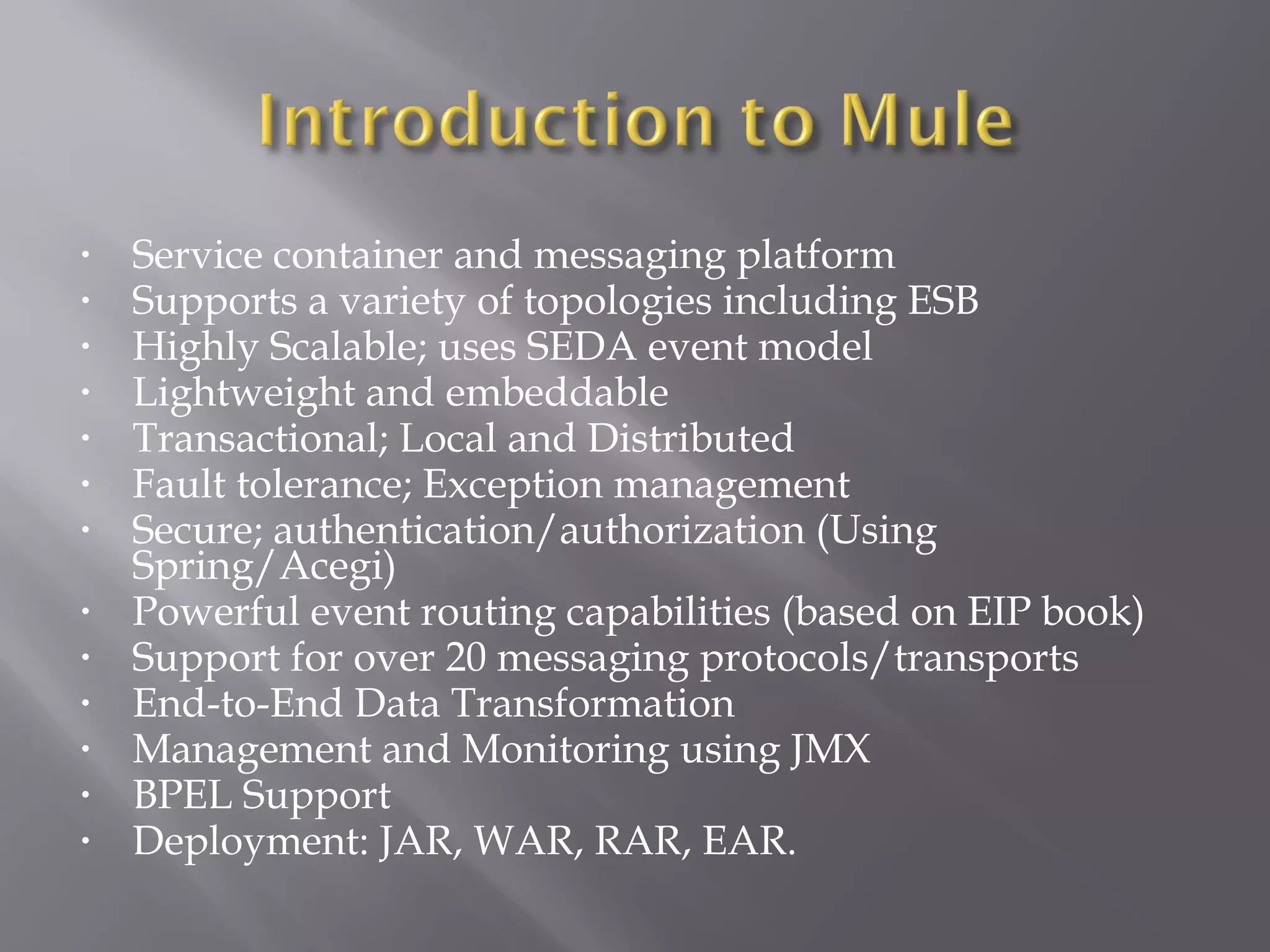

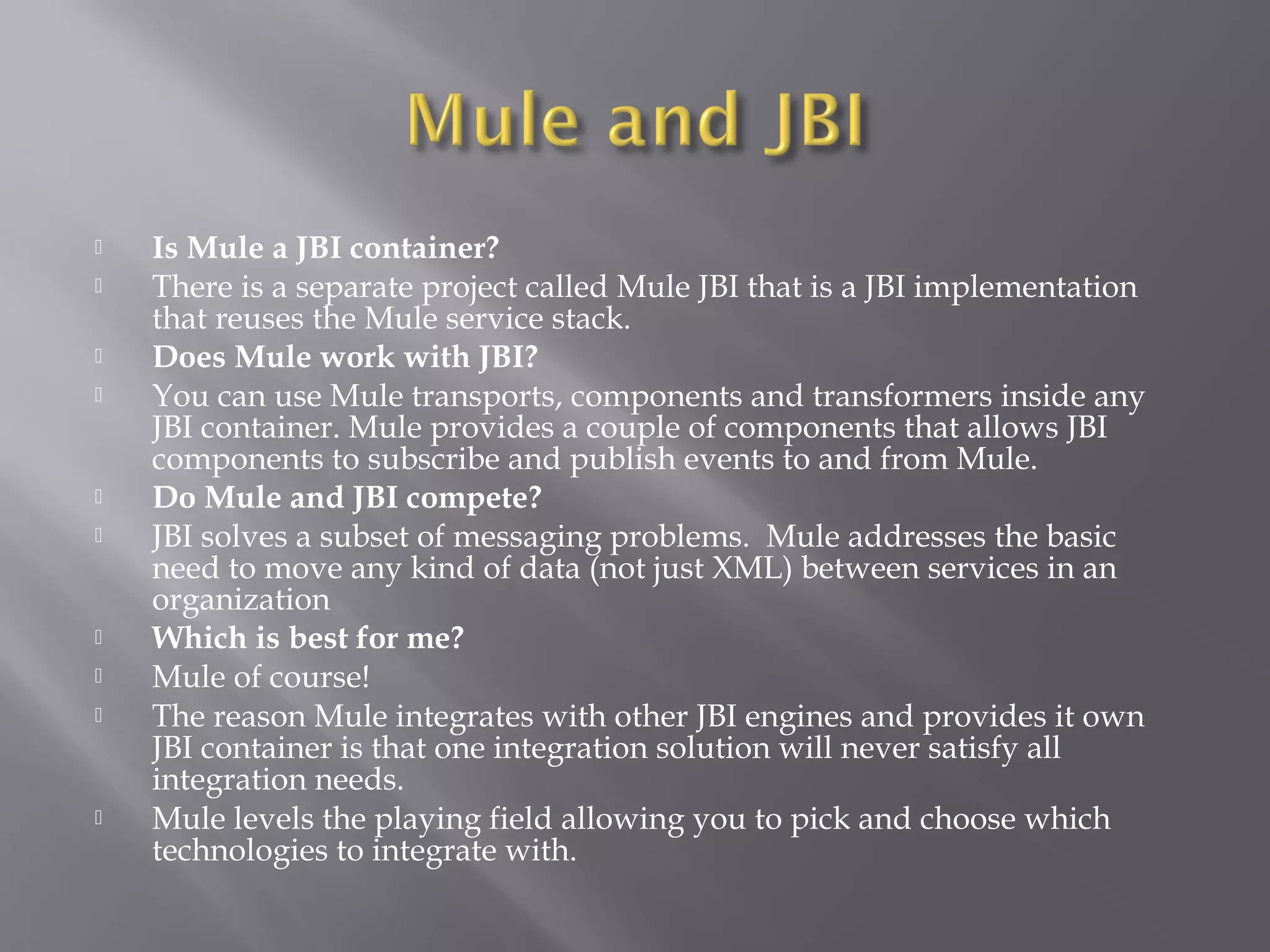
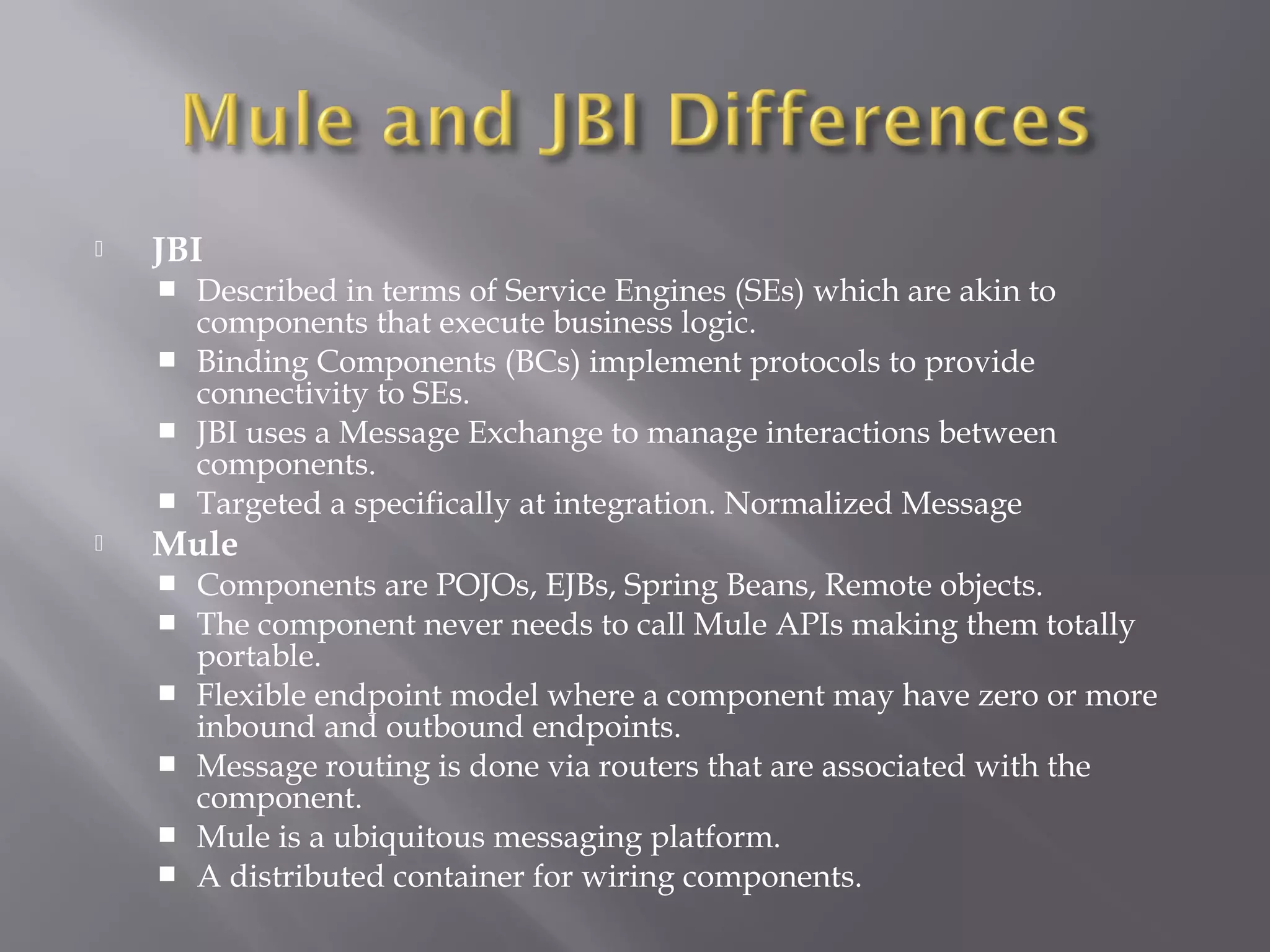
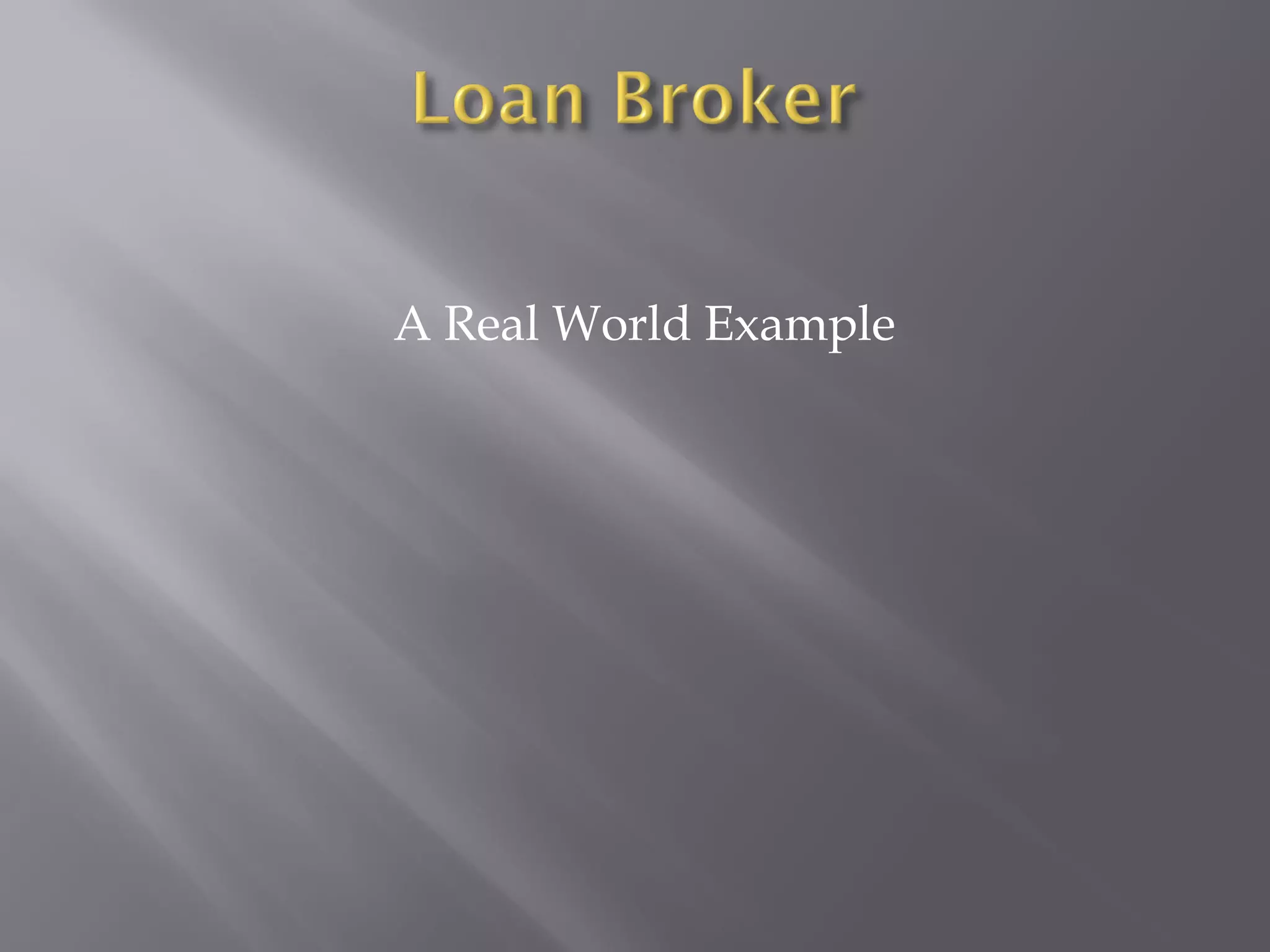
![ Customer calls different banks to find the best deal.
Each bank asks customer for his or her social security number, the
amount of the loan and the desired term.
Each bank then investigates the customer's credit background, usually
by contacting a credit agency, before it finally sends the customer a
quote.
Once the customer has received quotes from all banks, he or she can
then select the best offer, i.e. the lowest rate. [1]](https://image.slidesharecdn.com/mule-execution-151211155645/75/Mule-execution-10-2048.jpg)
![ This process can be automated to allow customers to obtain the
best quote on-line from a far broader range of banks, in much less
time than if he or she were to obtain all the quotes one by one.
Upon receiving customer request, Loan Broker:
obtains the credit information for that customer from the credit agency
requests quotes for the customer from banks listed with the Lender
Service
sends aggregate compilation of quotes to the customer for selection.
[2]](https://image.slidesharecdn.com/mule-execution-151211155645/75/Mule-execution-11-2048.jpg)
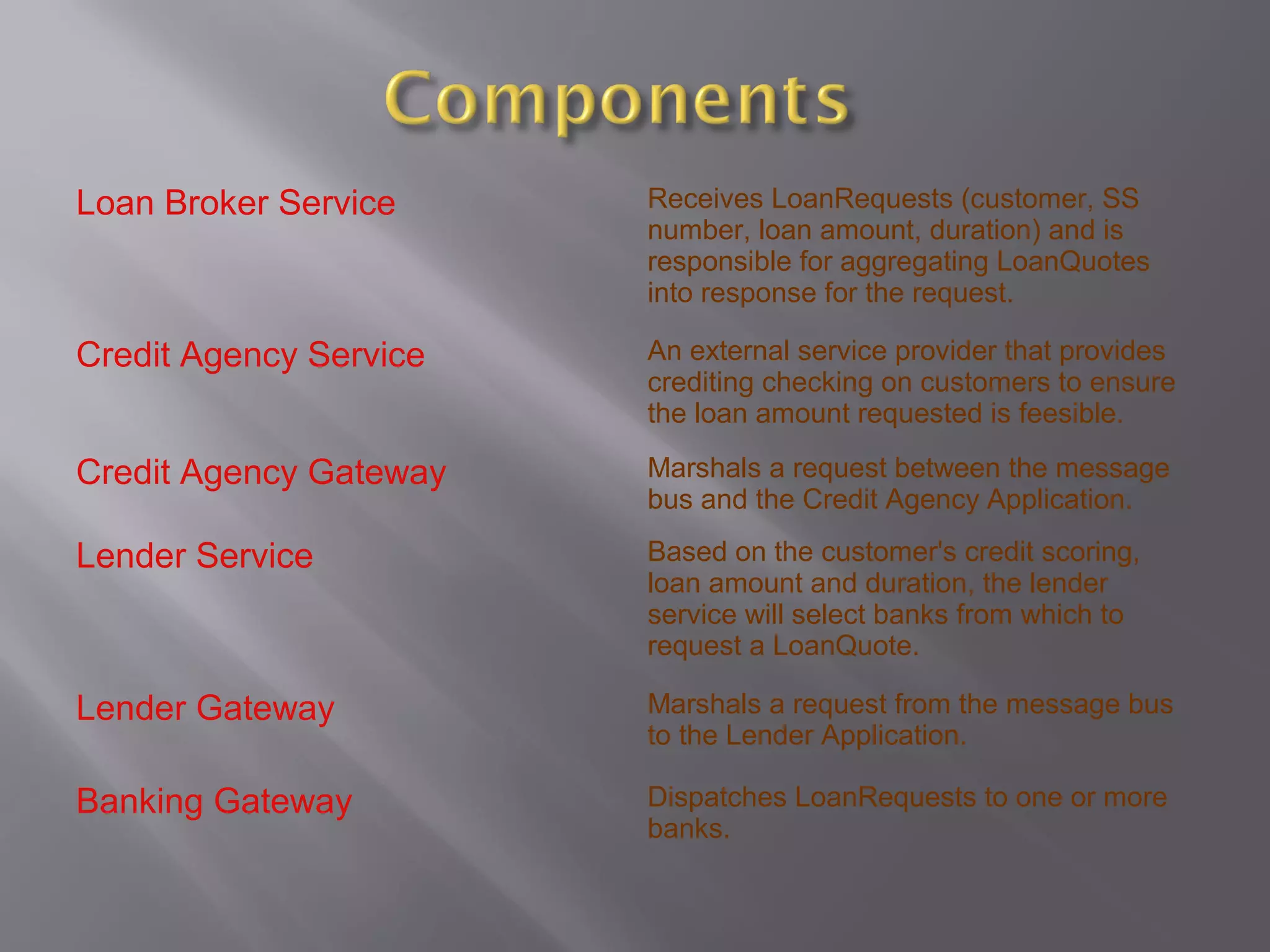
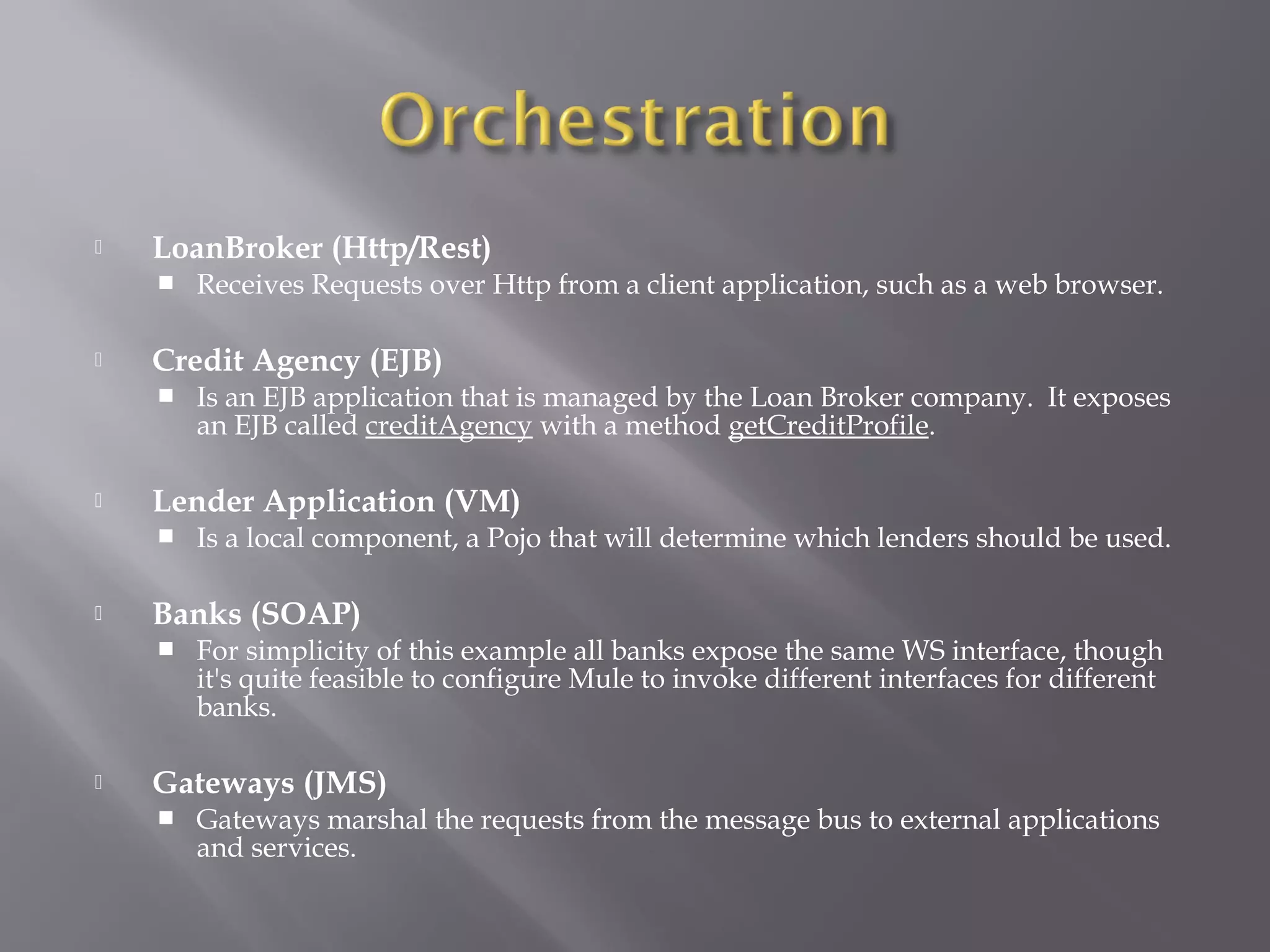
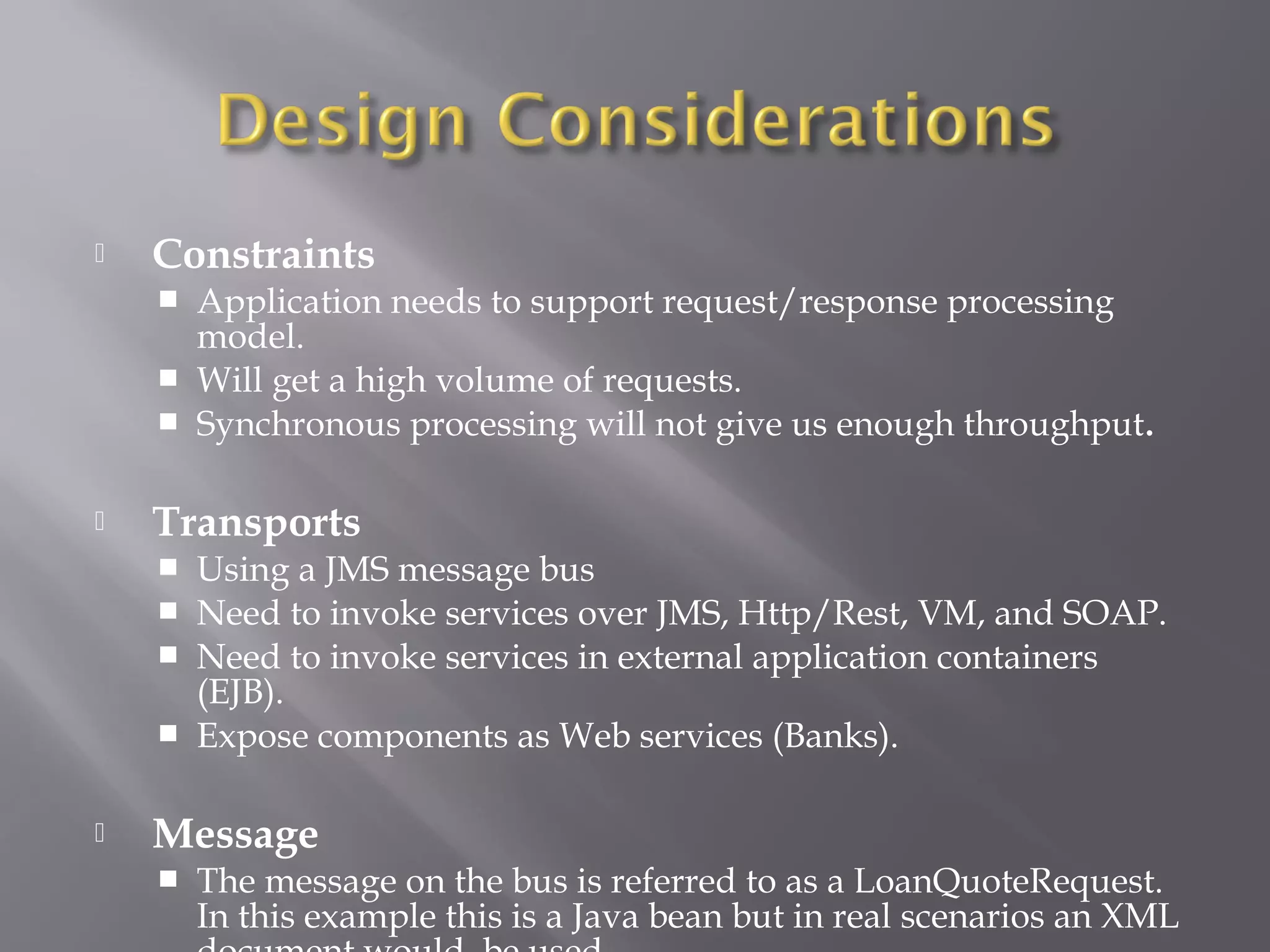
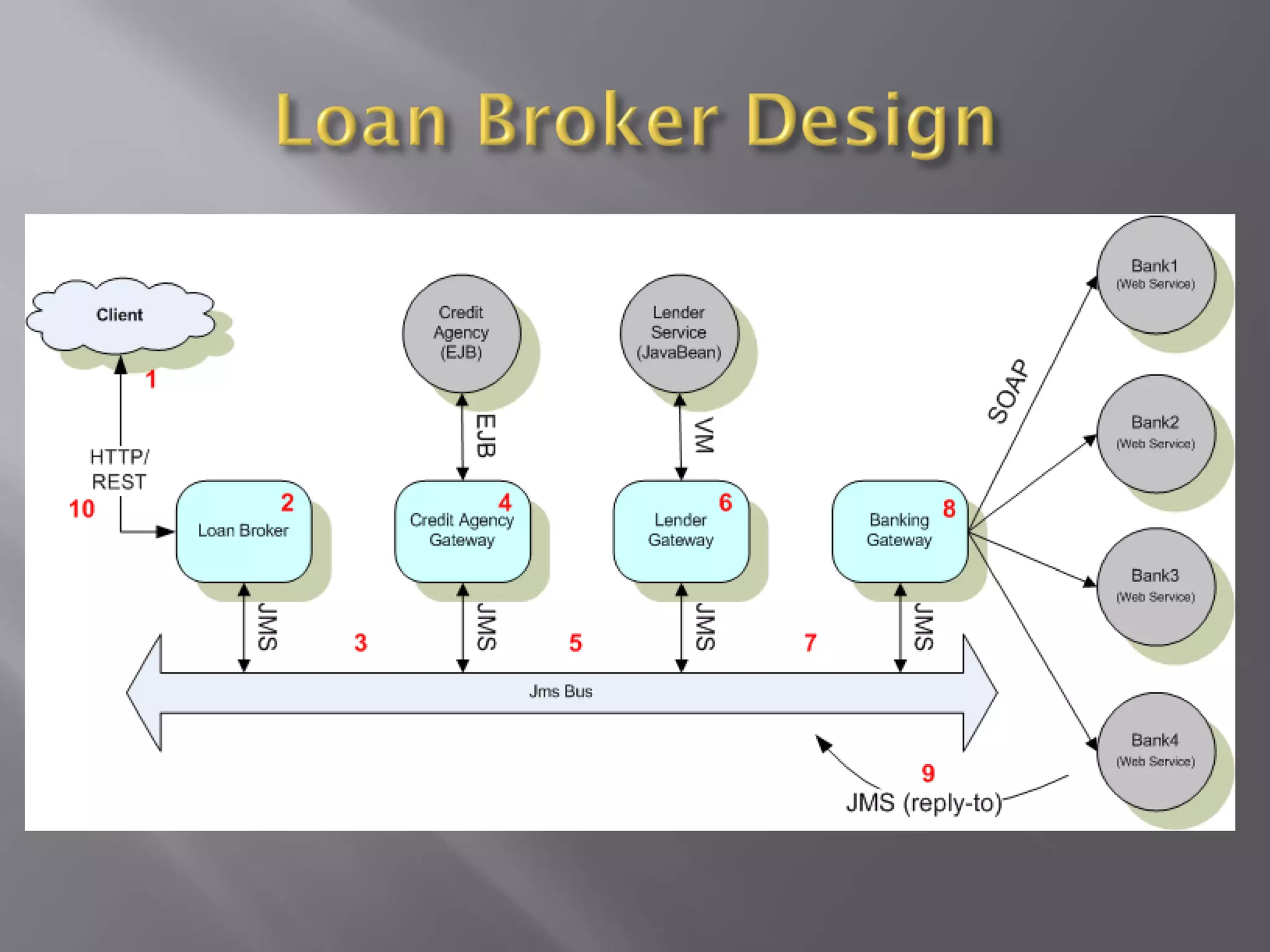
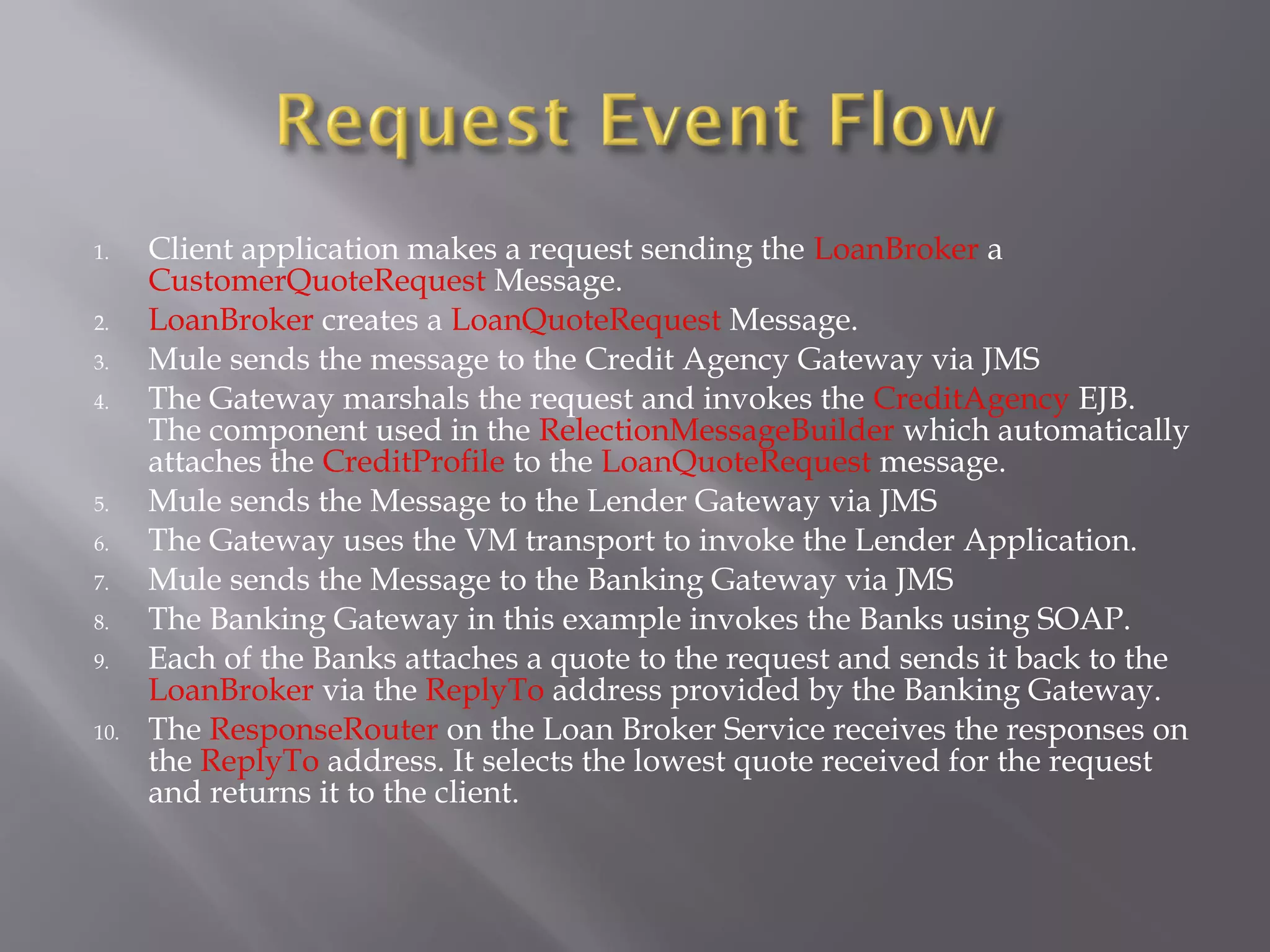

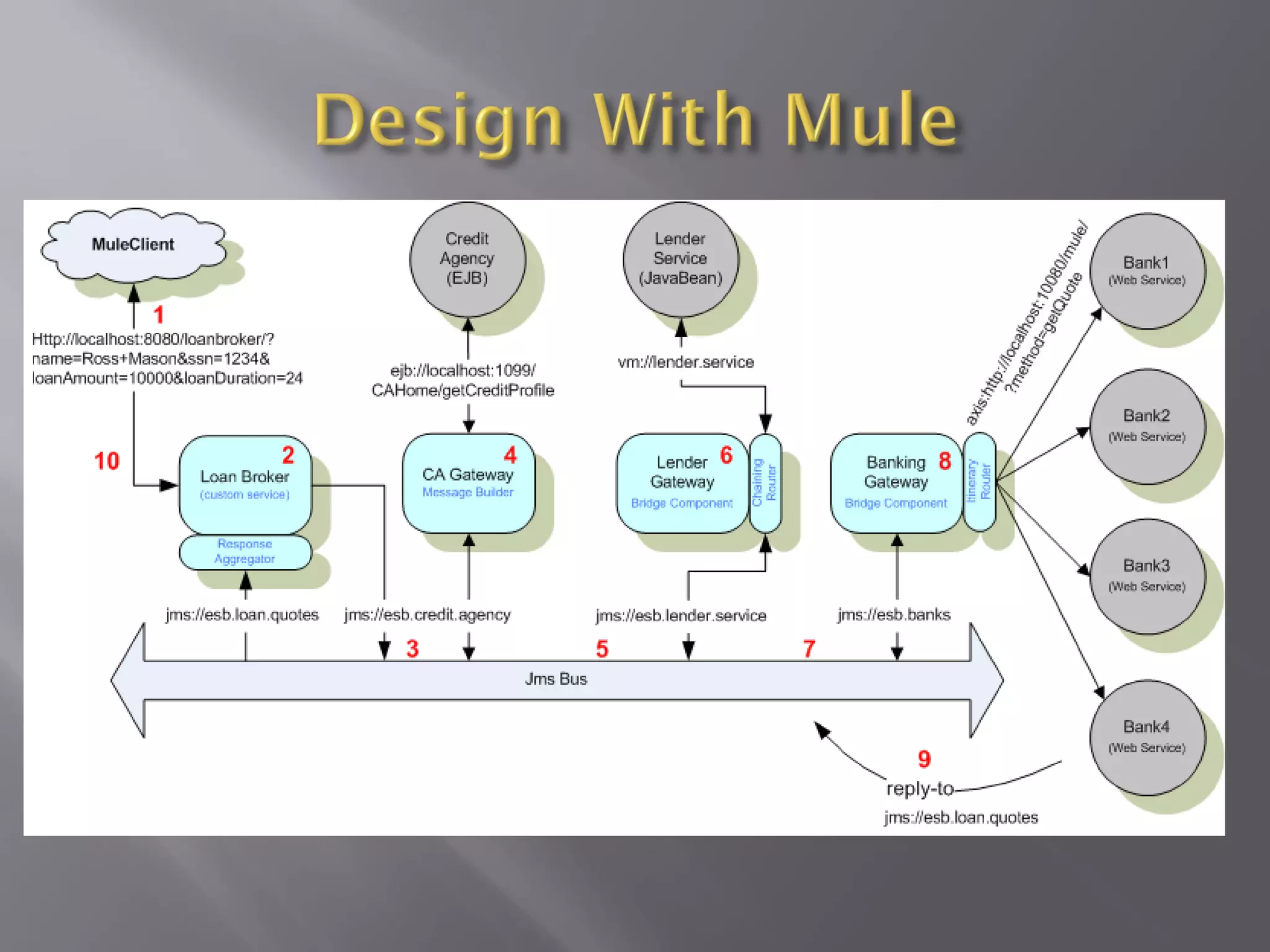
![Lets start by defining the LoanQuoteRequest Message. In this example the
Message is a Java bean and is the common message format on the bus.
Normally this would be XML, but Mule allows us to pass any data format
around.
public class LoanQuoteRequest implements Serializable
{
/** The request contains Customer info and loan amount and duration*/
private CustomerQuoteRequest customerRequest;
/** credit profile for the customer */
private CreditProfile creditProfile;
/** A list of lenders for this request */
private Bank[] lenders;
/** A loan quote from a bank */
private LoanQuote loanQuote;
.......
}](https://image.slidesharecdn.com/mule-execution-151211155645/75/Mule-execution-19-2048.jpg)
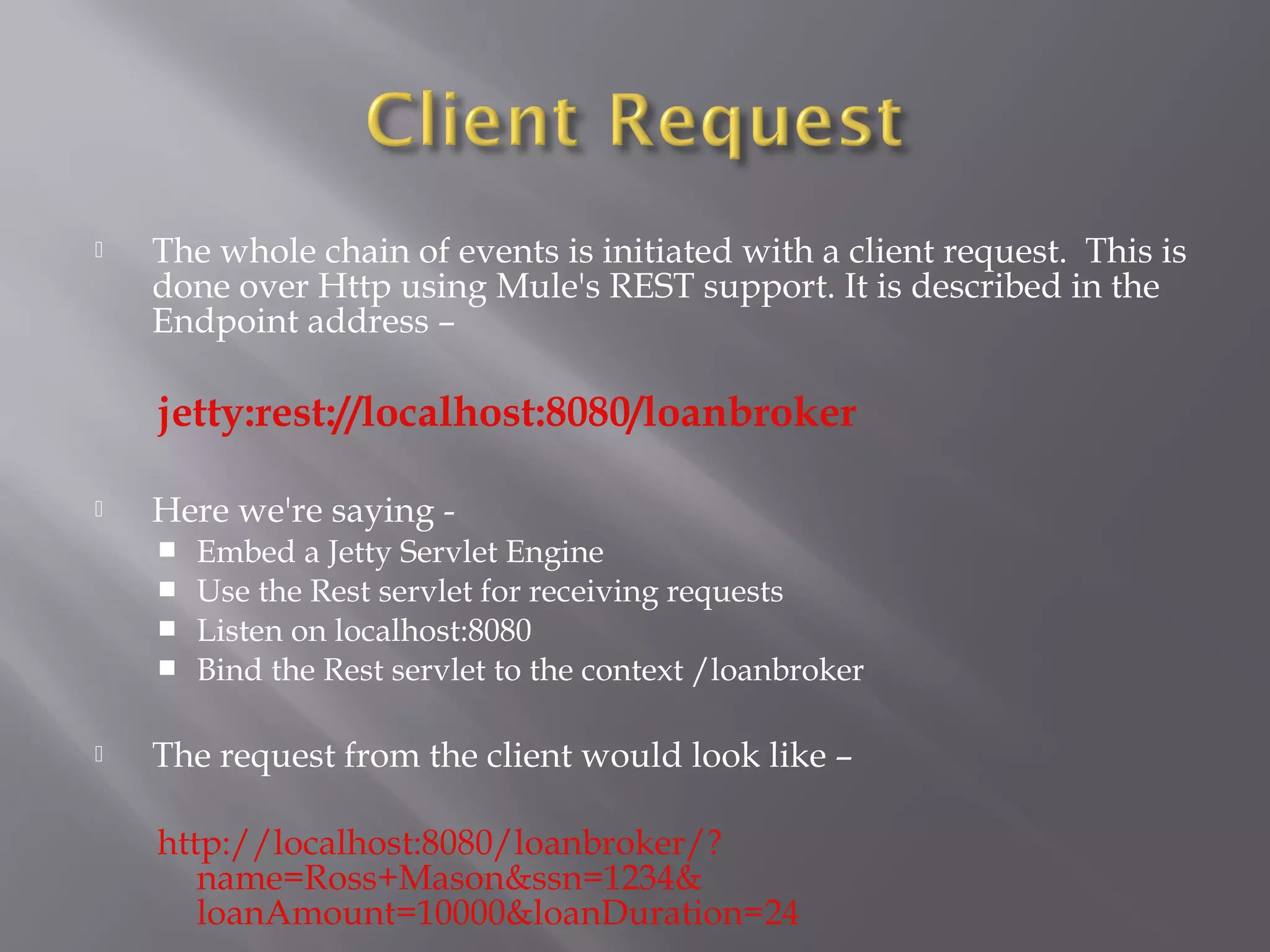
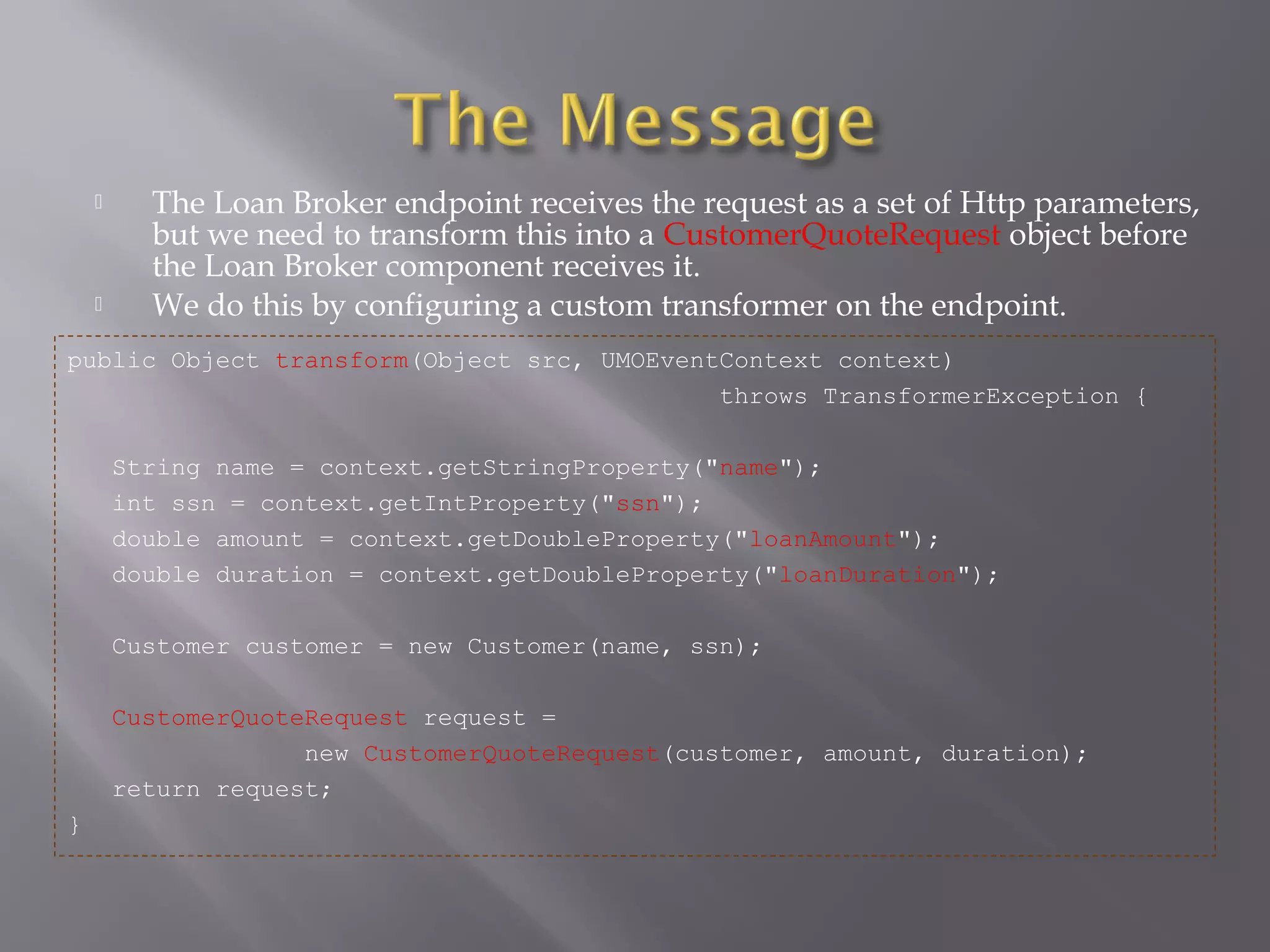
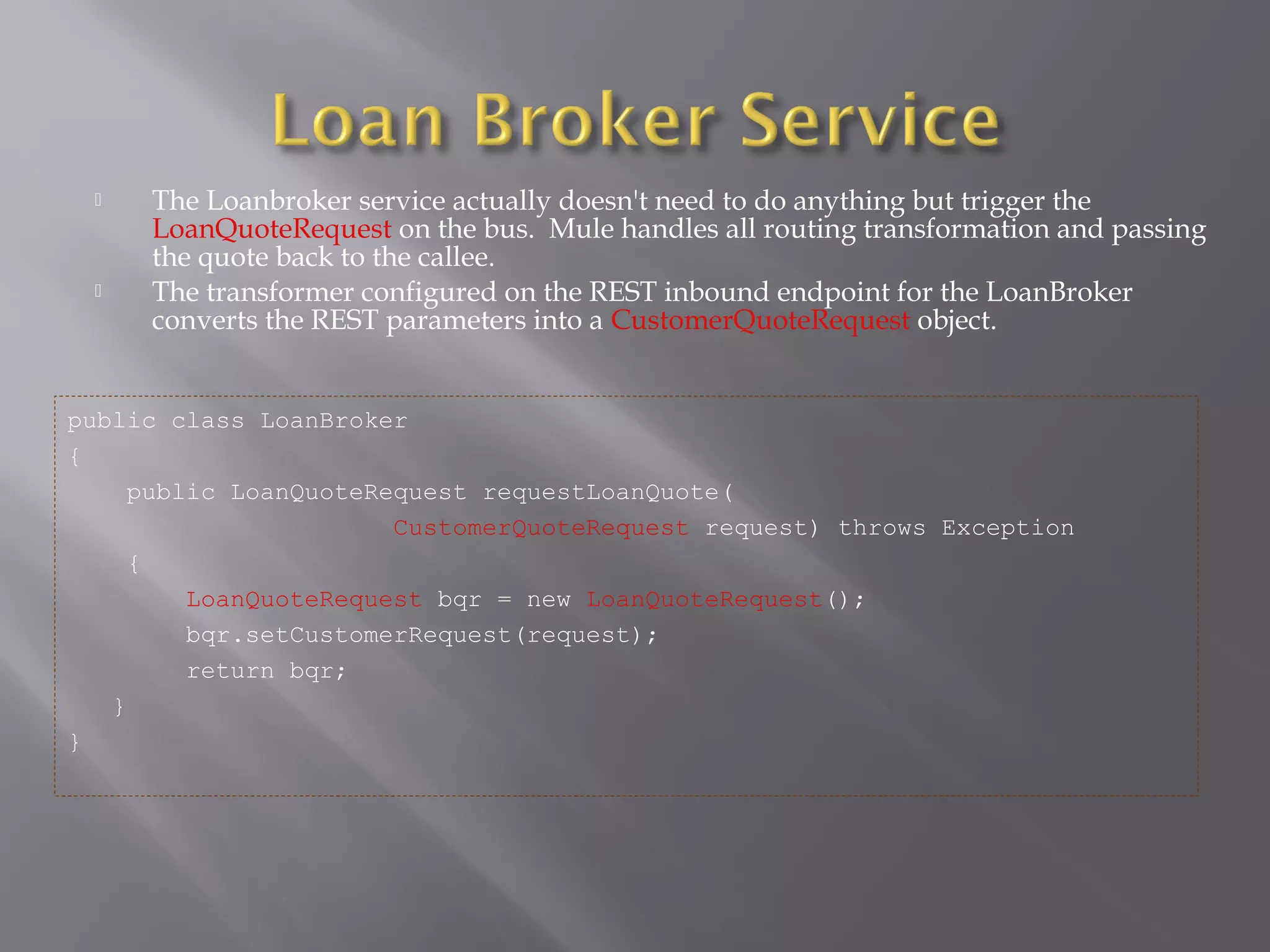
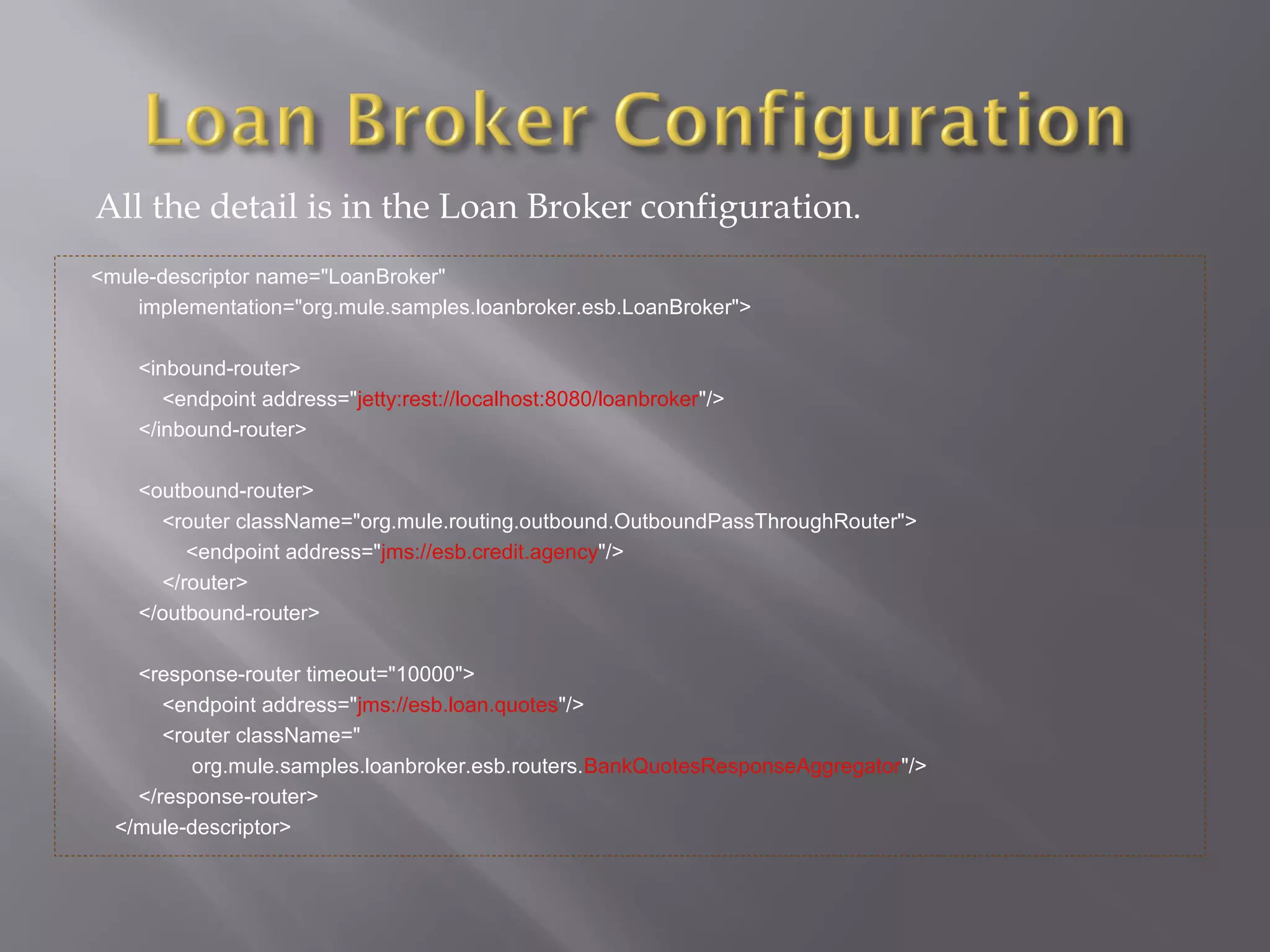
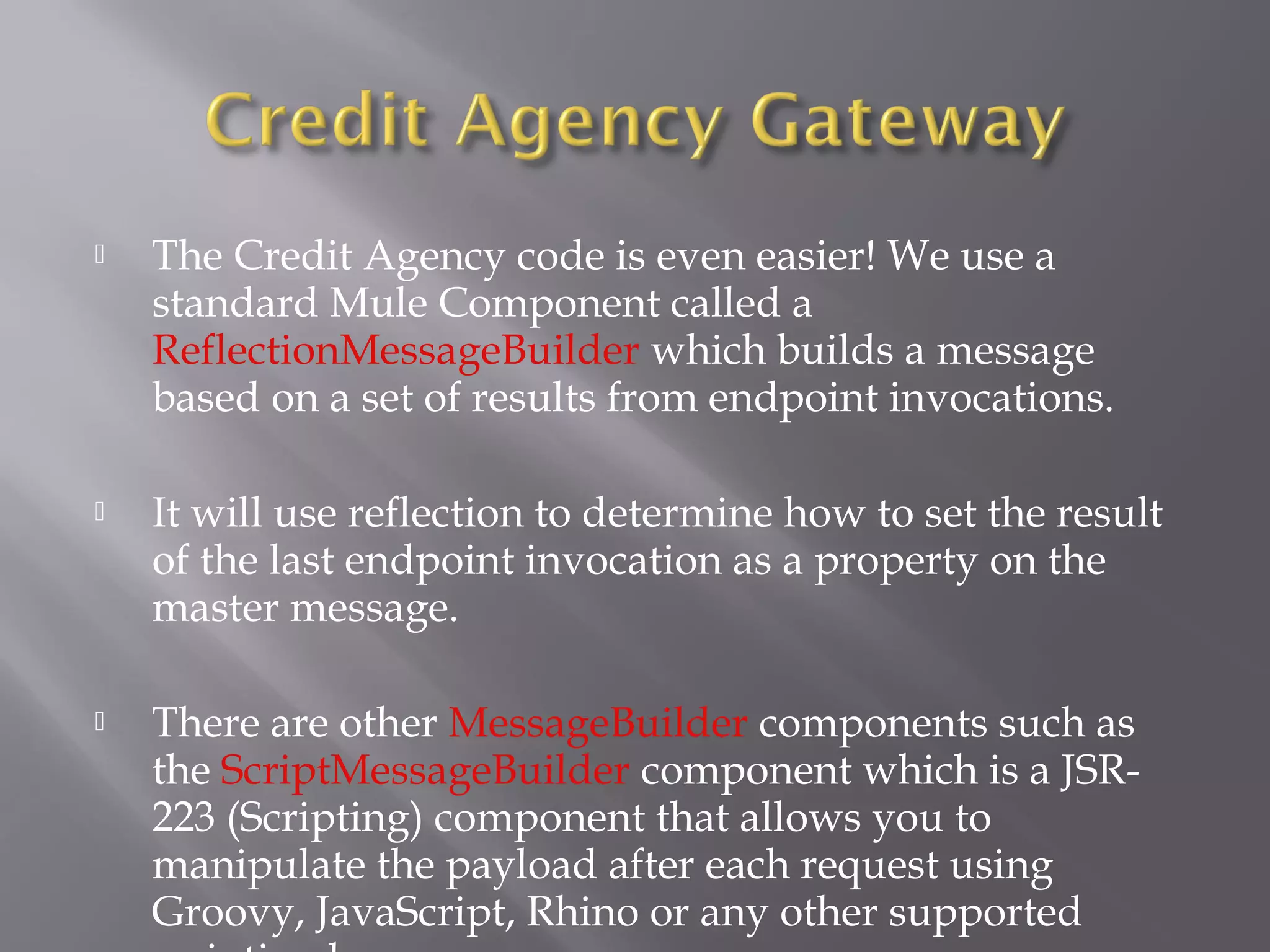
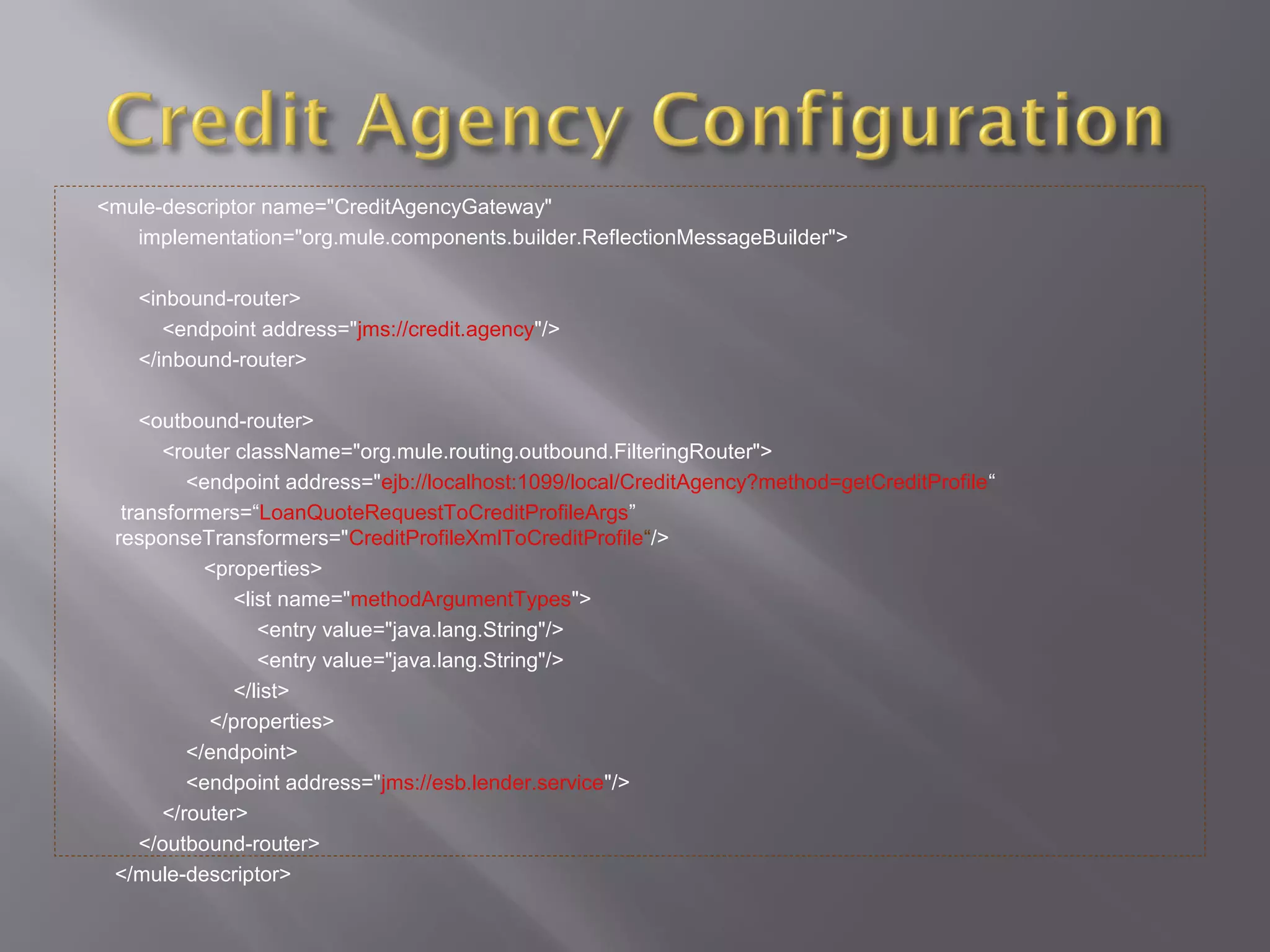

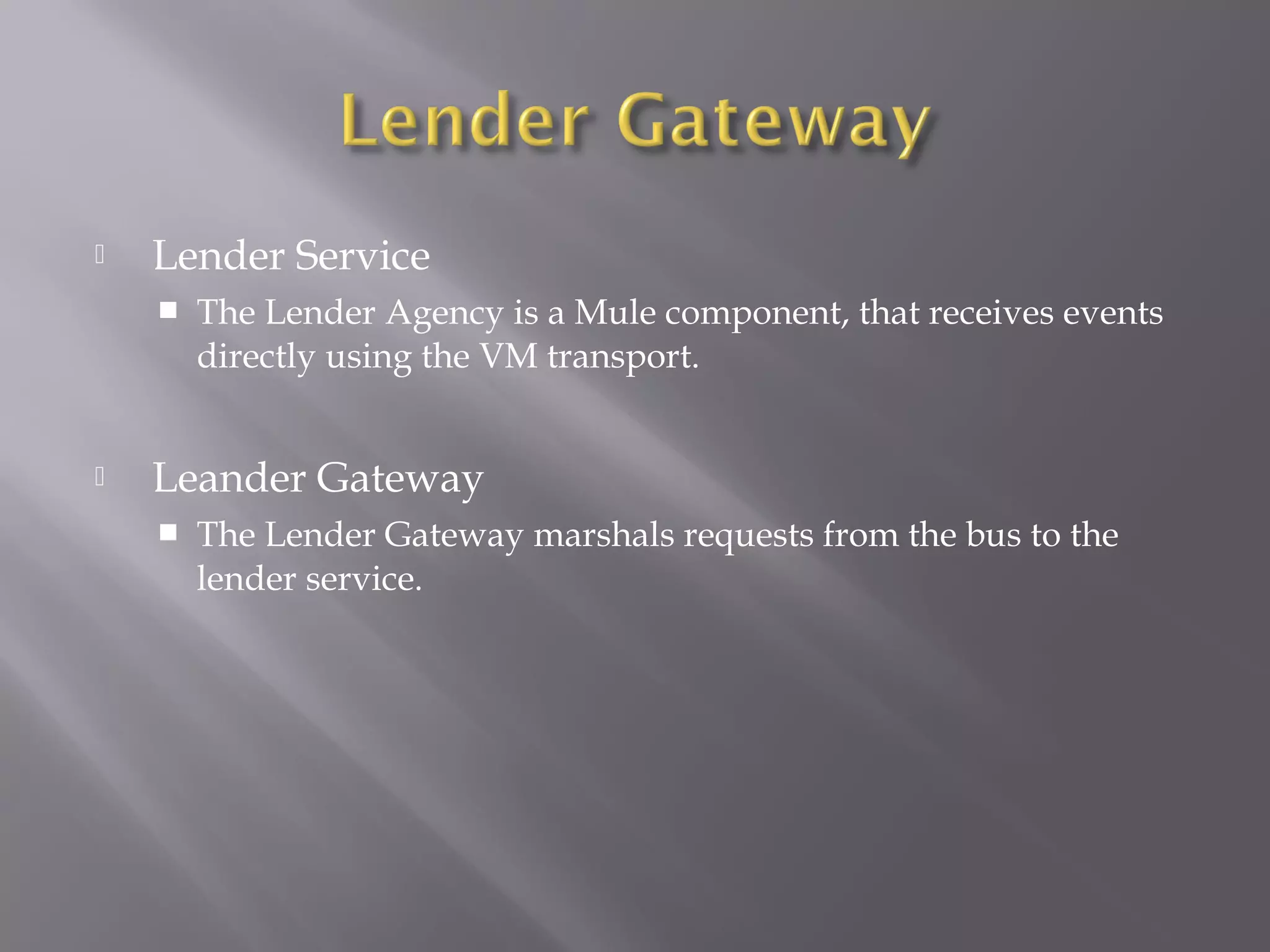
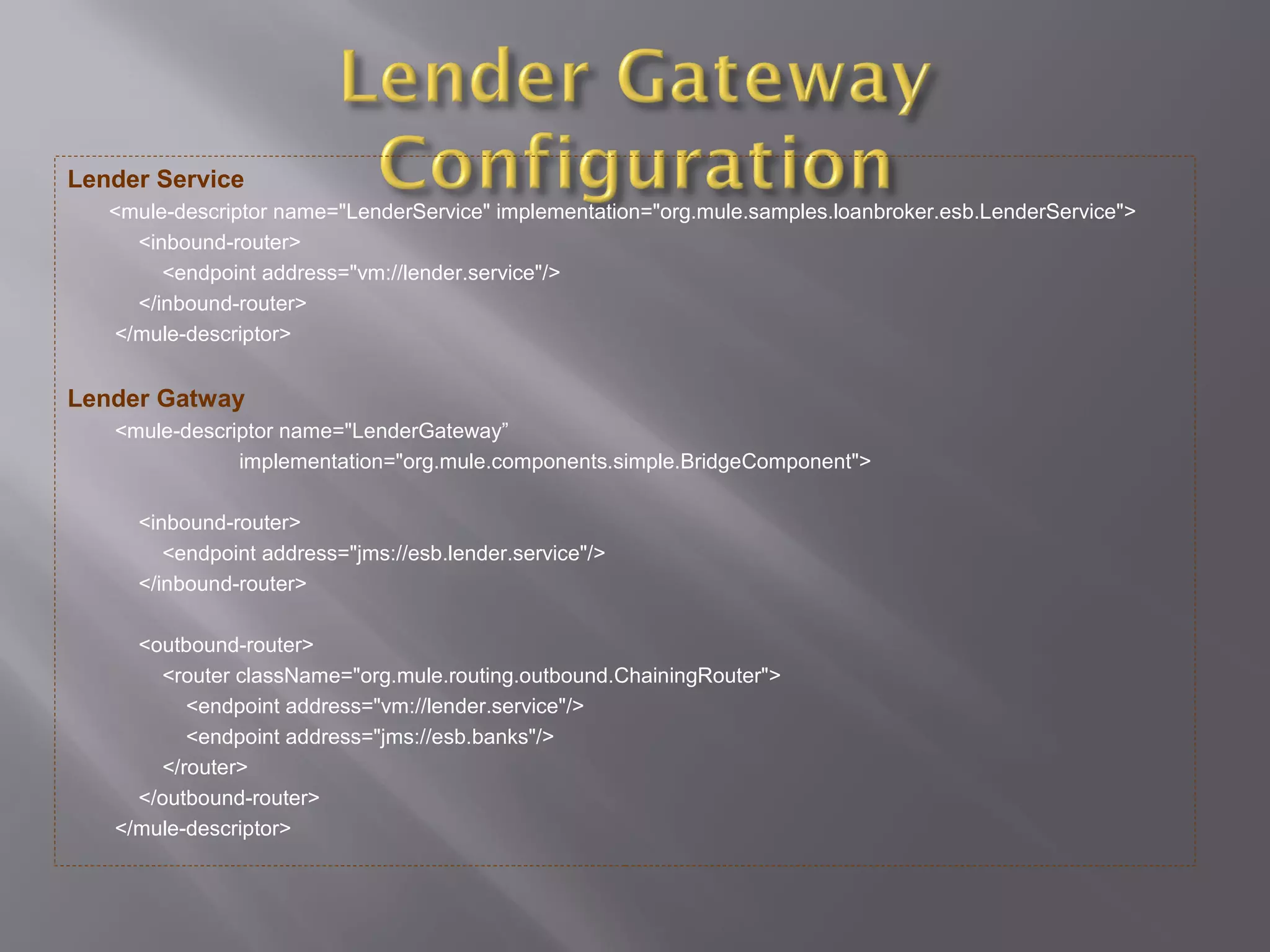
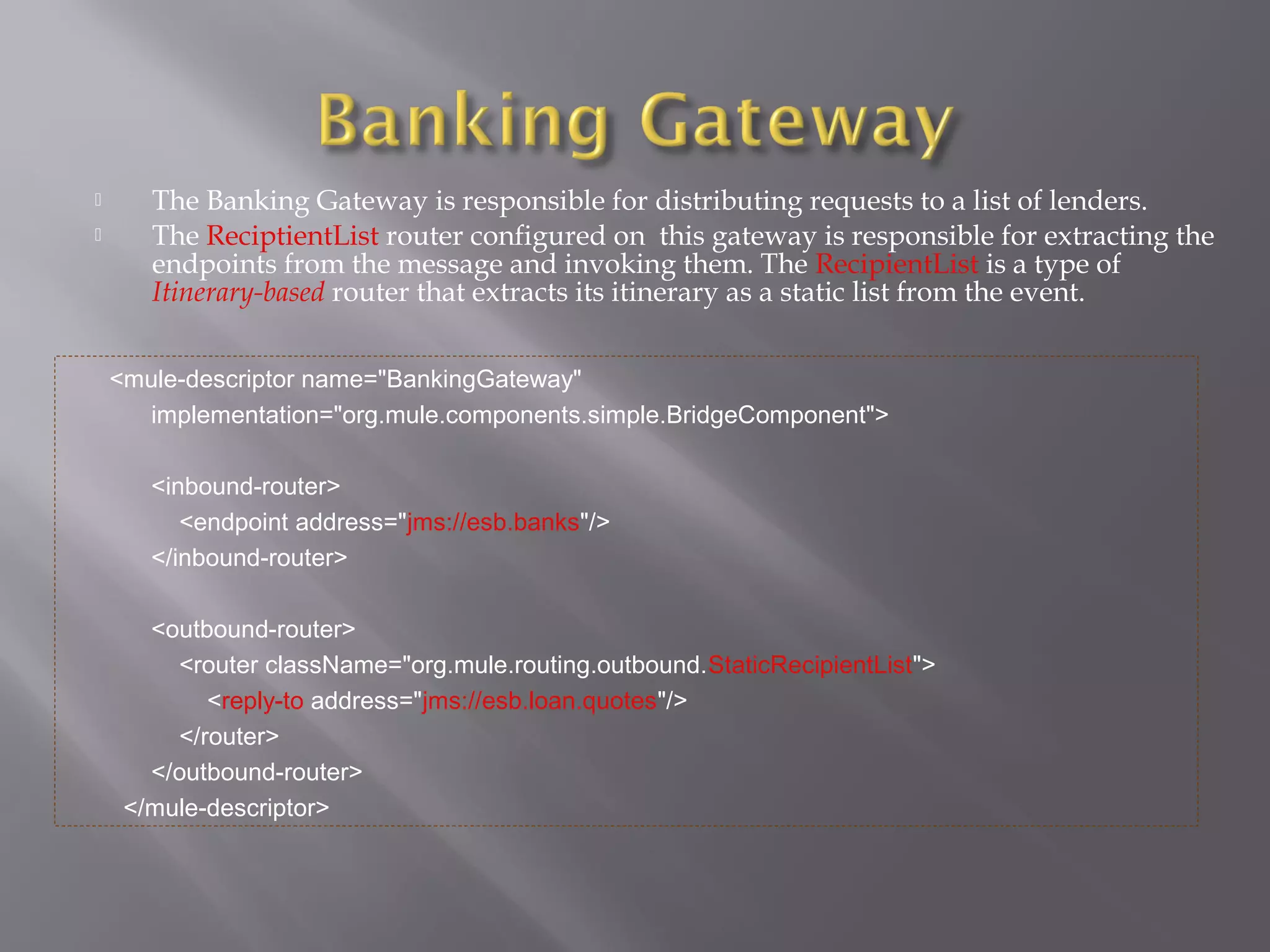
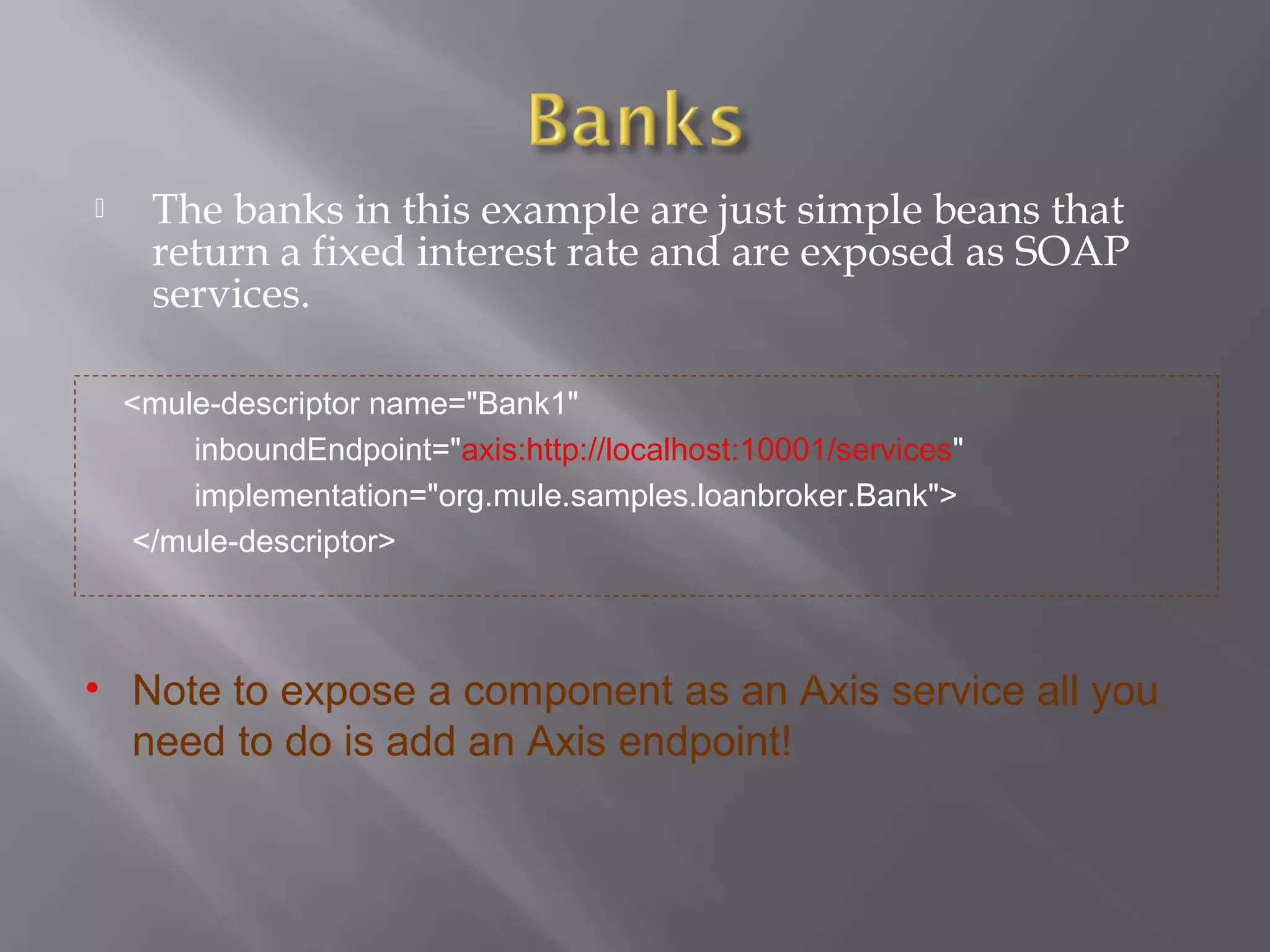
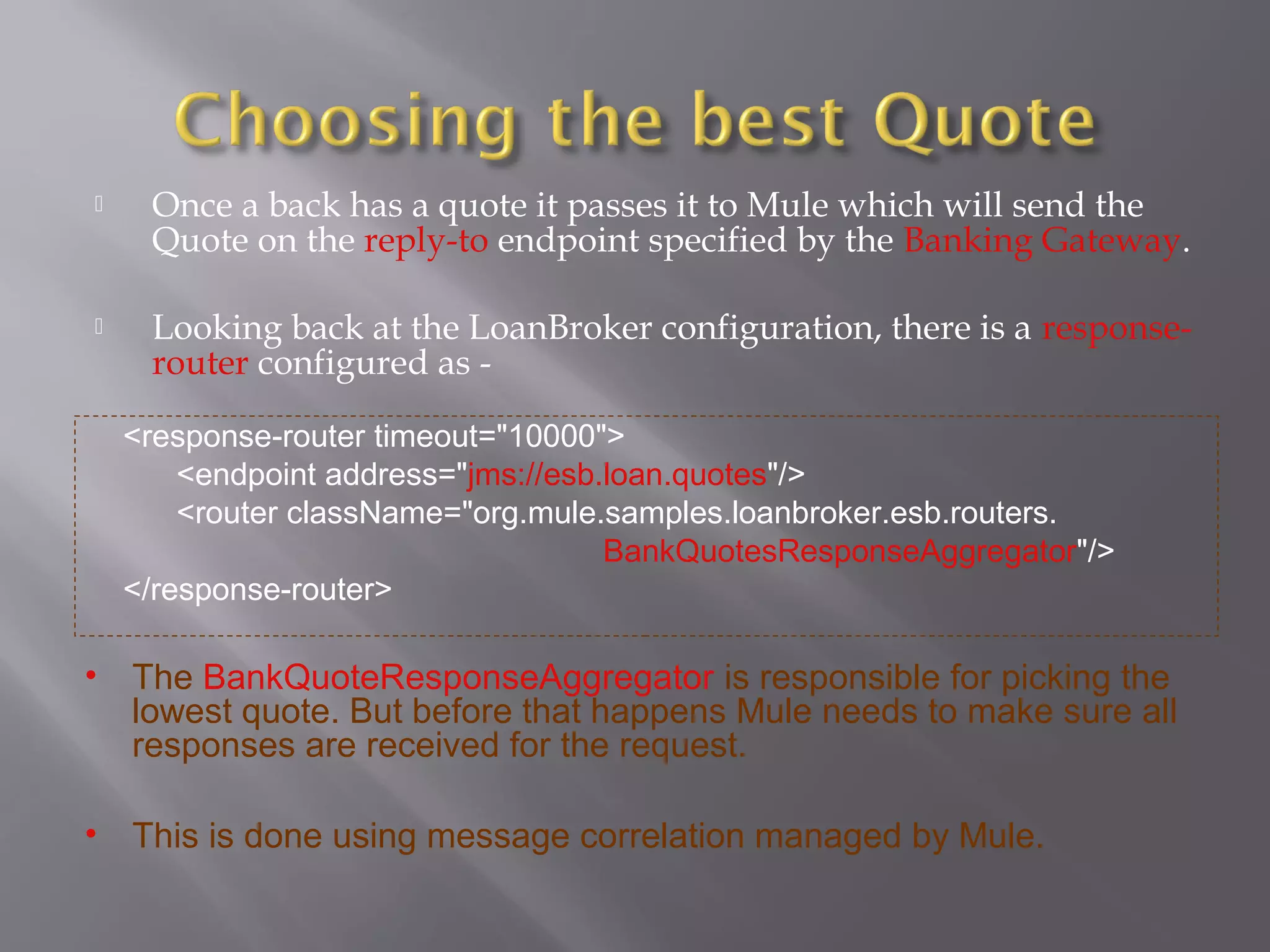
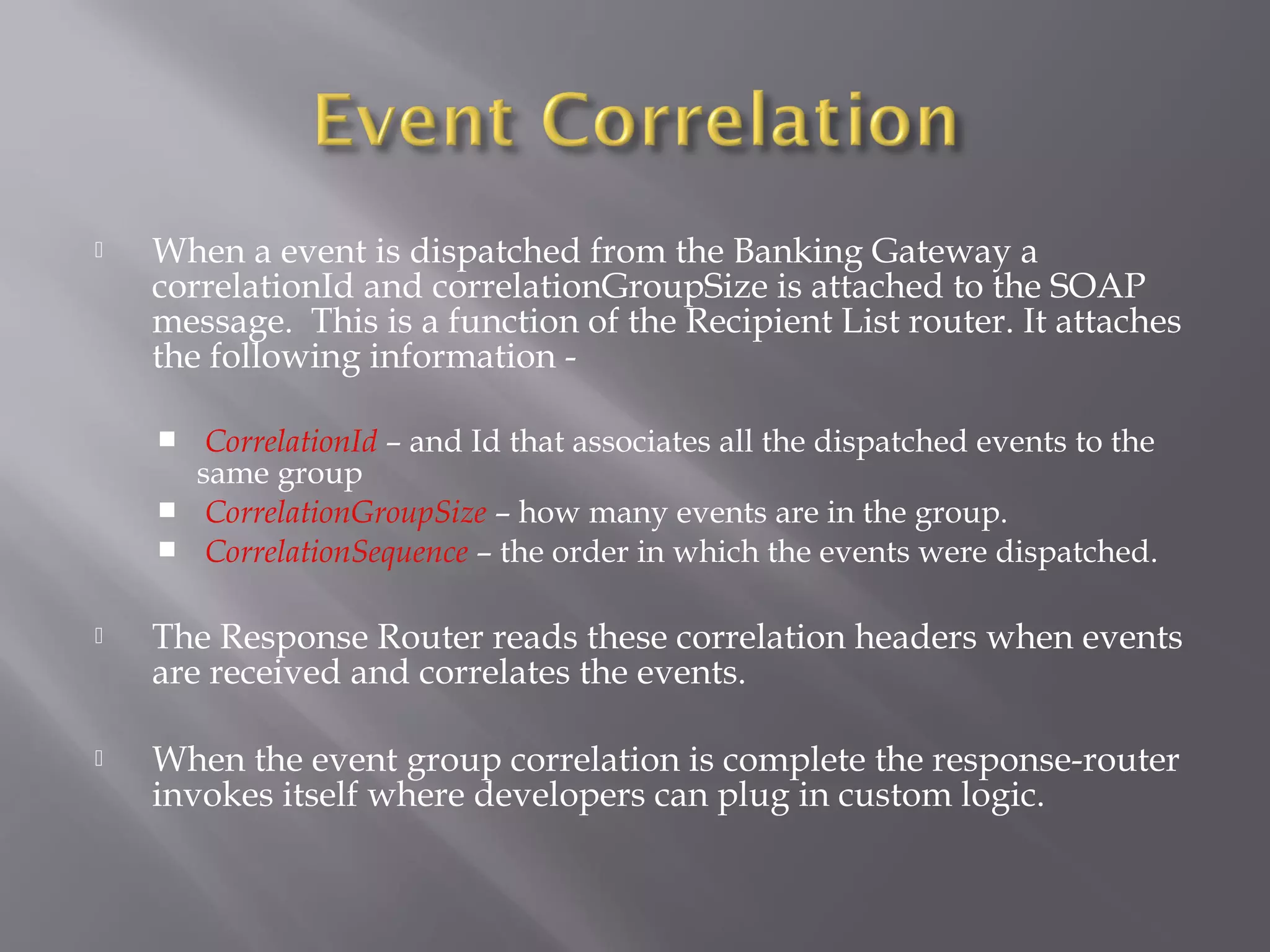
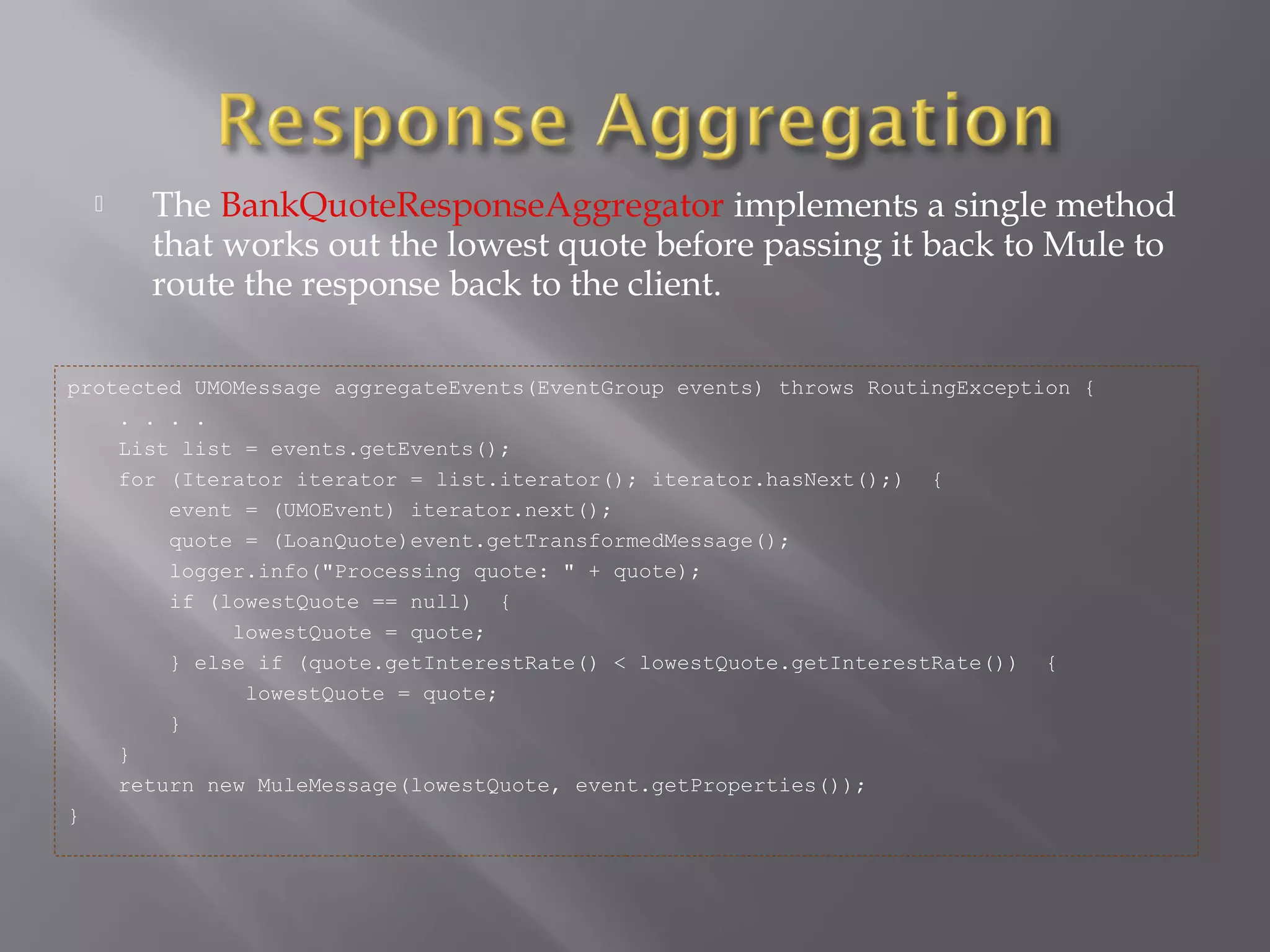
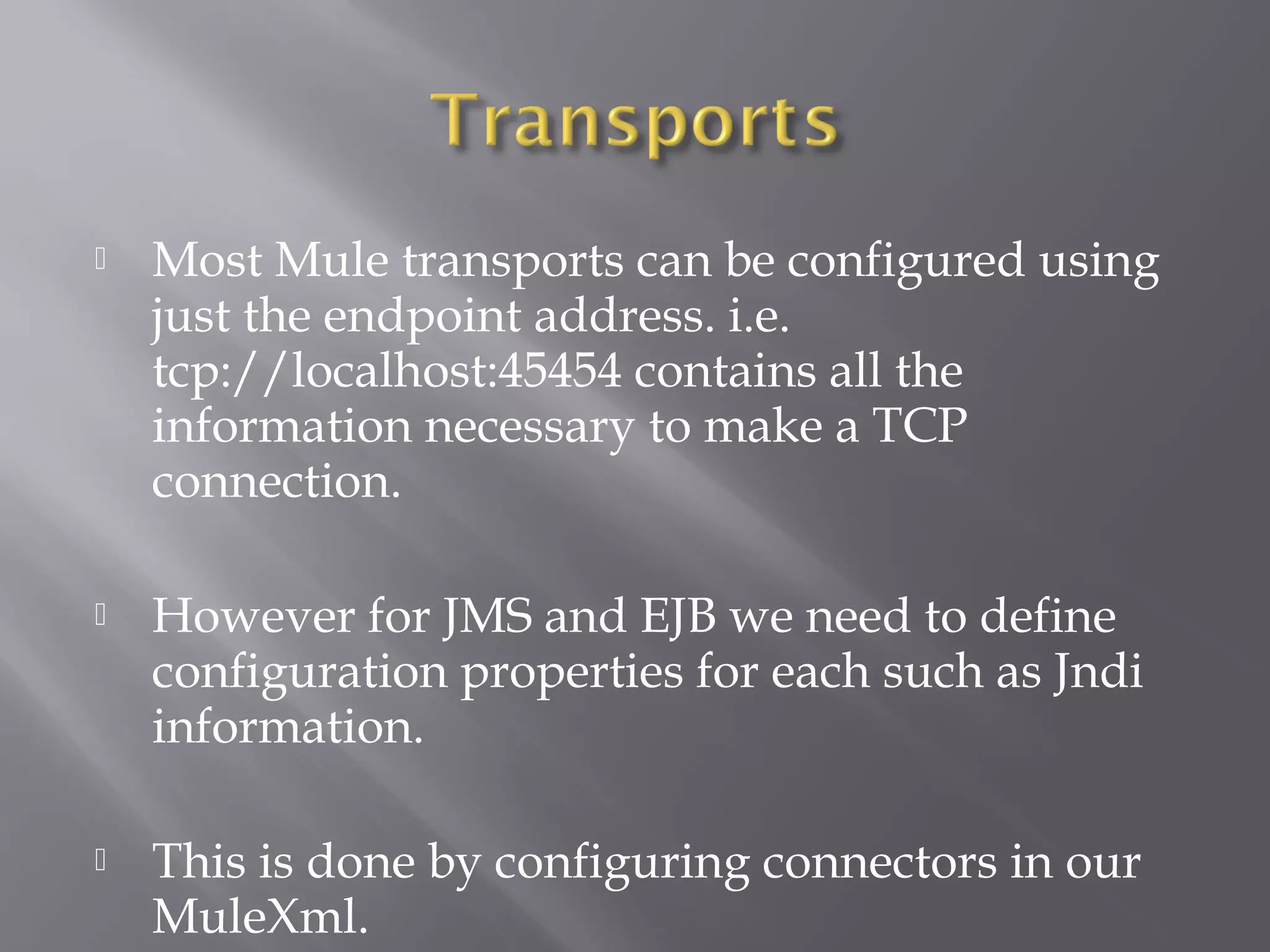
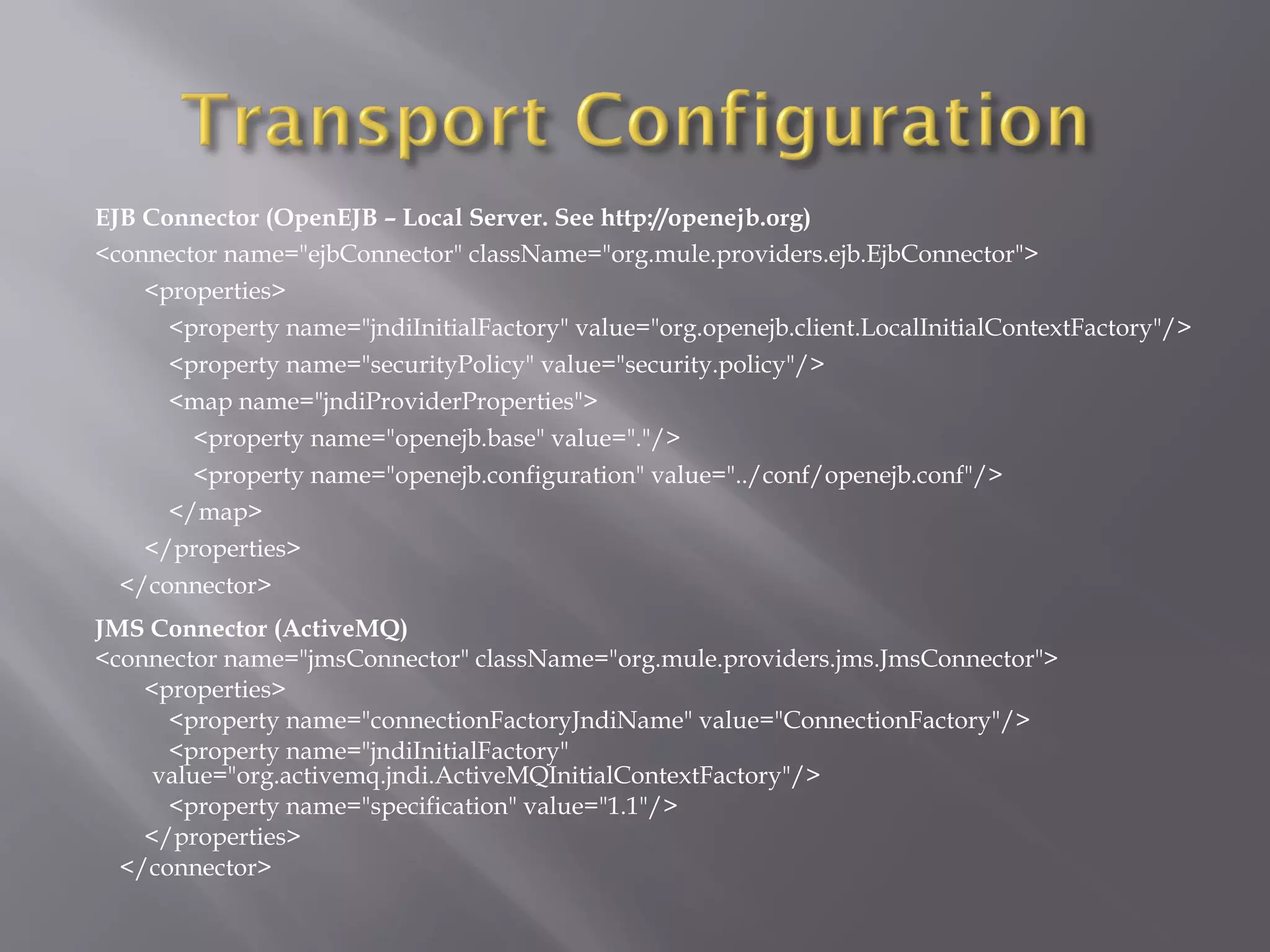
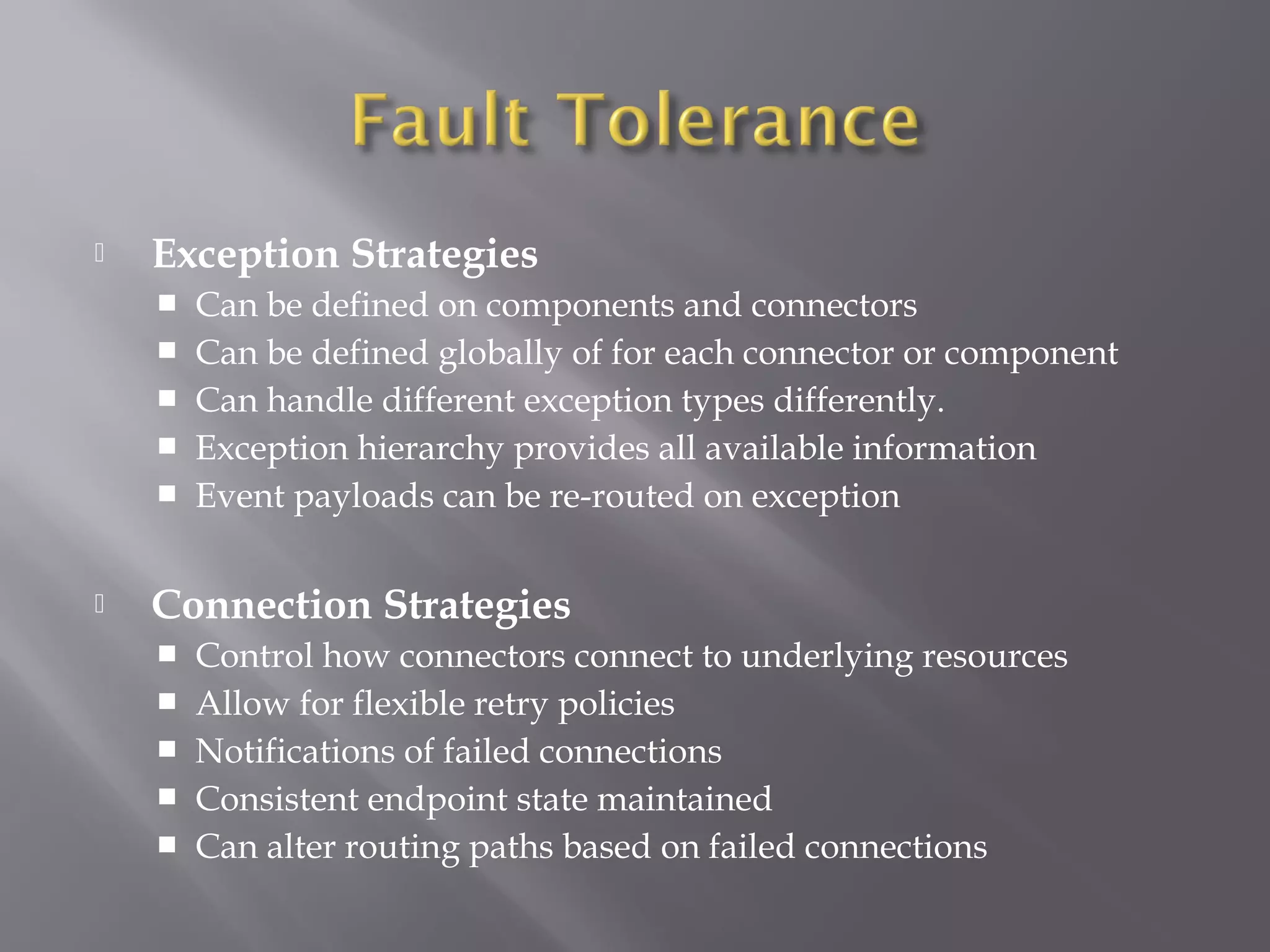
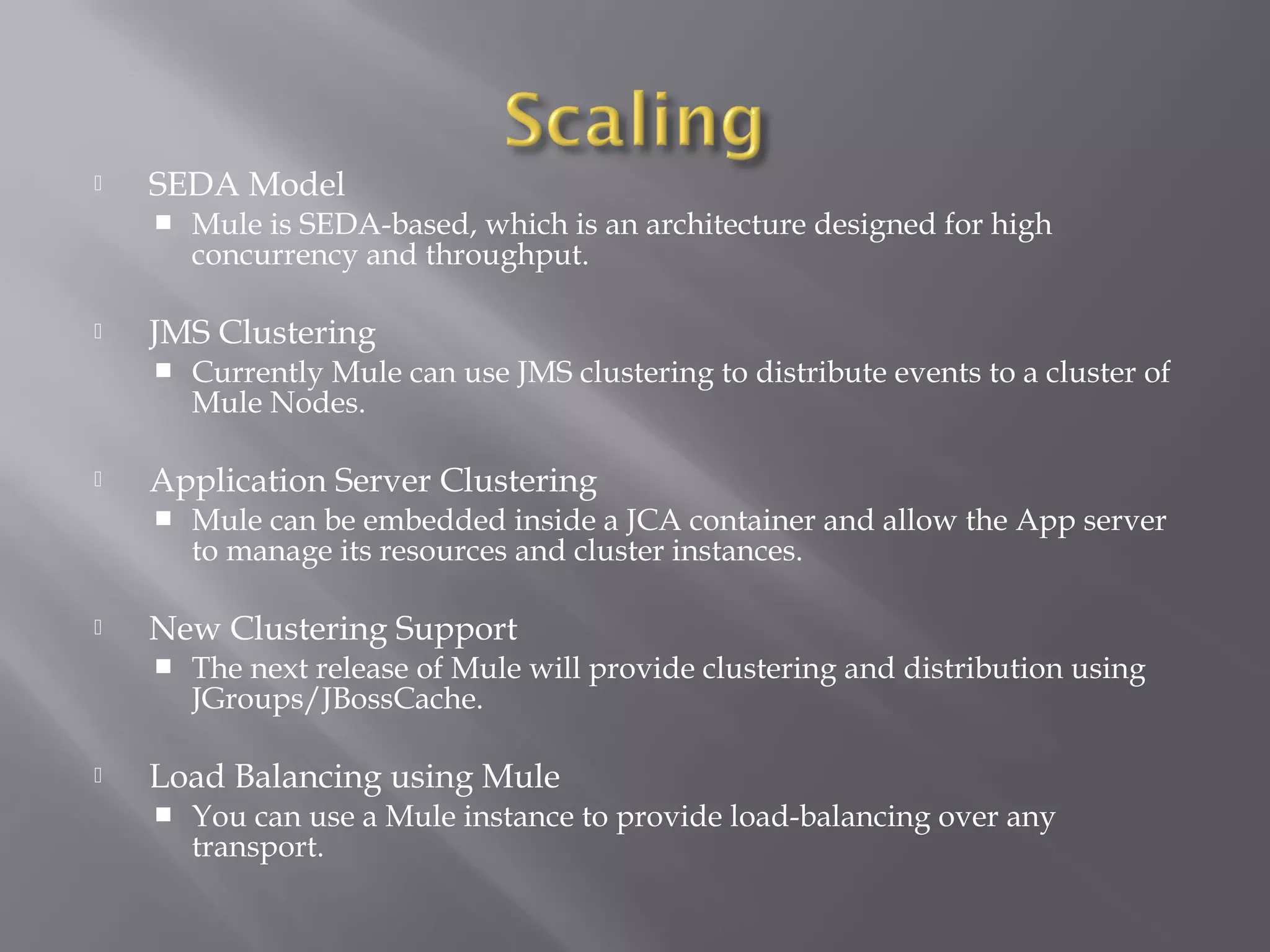
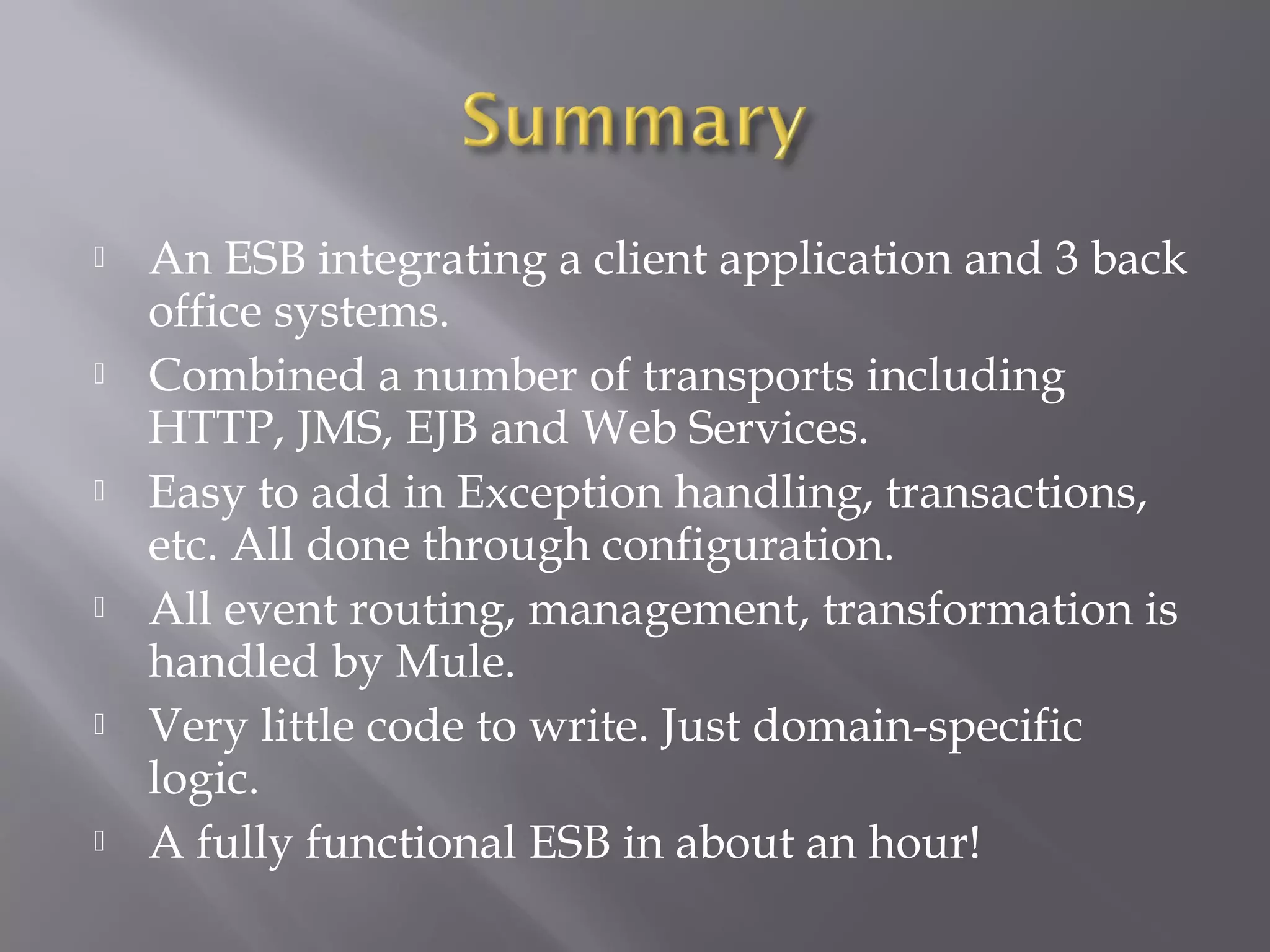
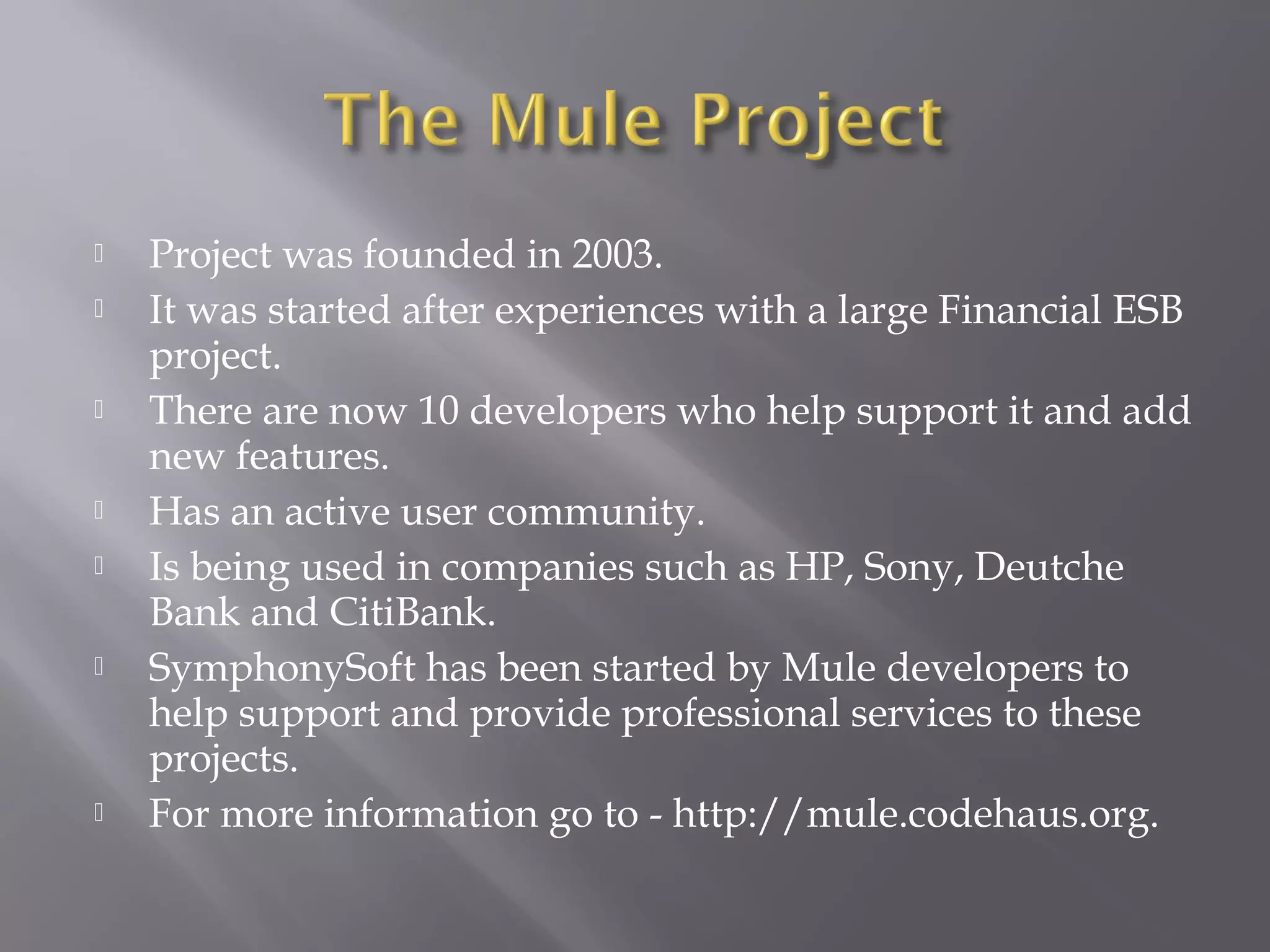
![ EIP Book (Loan Broker Example) [1][2]
http://www.eaipatterns.com/ComposedMessagingExample.html
http://www.eaipatterns.com/index.html
Introduction to ESBs – Rick Robinson
http://www-106.ibm.com/developerworks/xml/library/ws-
esbscen/
ESB Learning Guide
http://searchwebservices.techtarget.com/general/1,295582,sid26
_gci1085711,00.html
Introduction to SEDA – Matt Welsh
http://www.eecs.harvard.edu/~mdw/papers/mdw-
phdthesis.pdf
Mule User Guide
http://mule.codehaus.org/User+Guide](https://image.slidesharecdn.com/mule-execution-151211155645/75/Mule-execution-40-2048.jpg)
